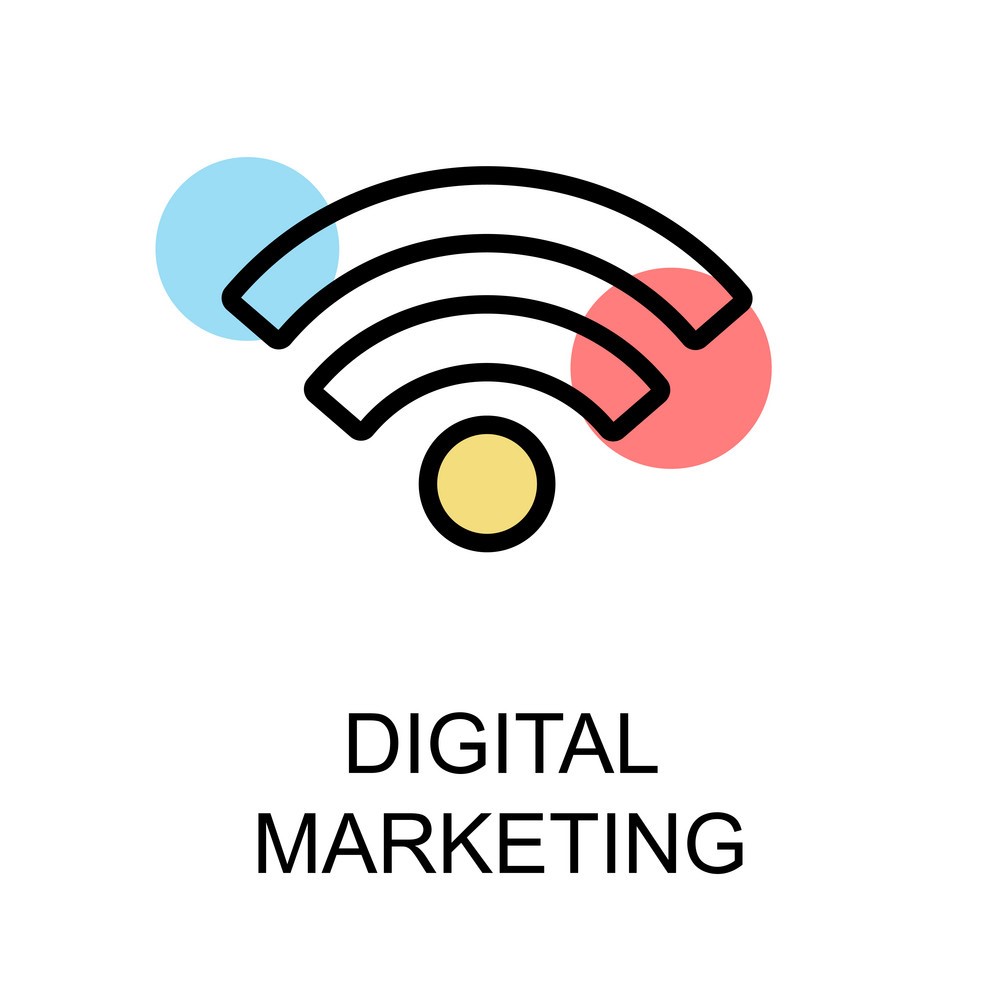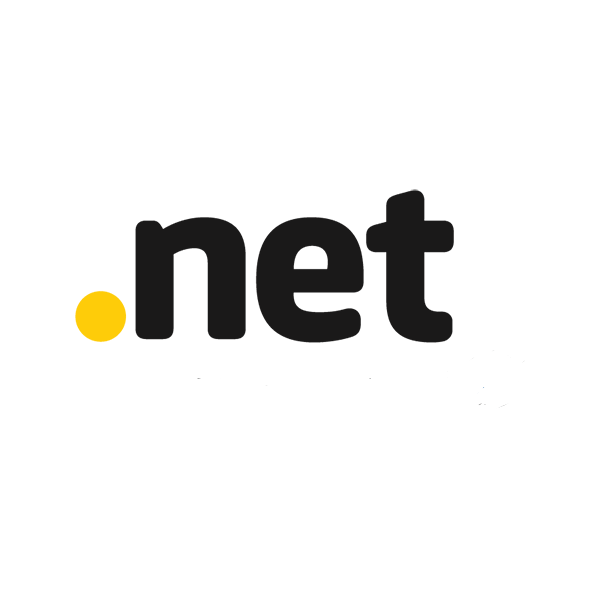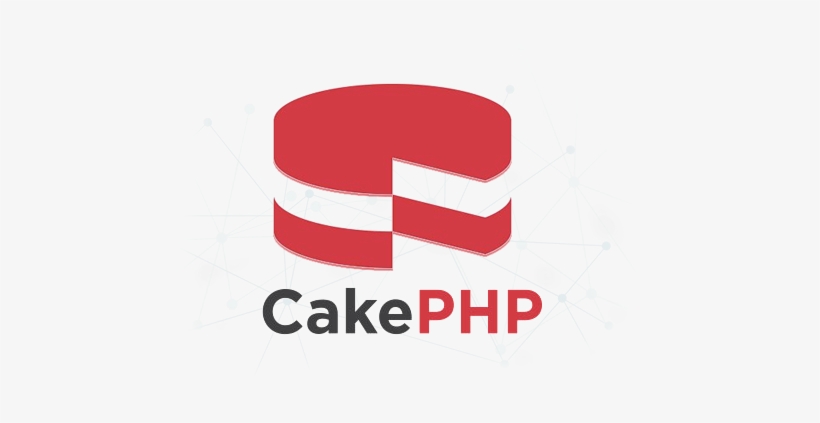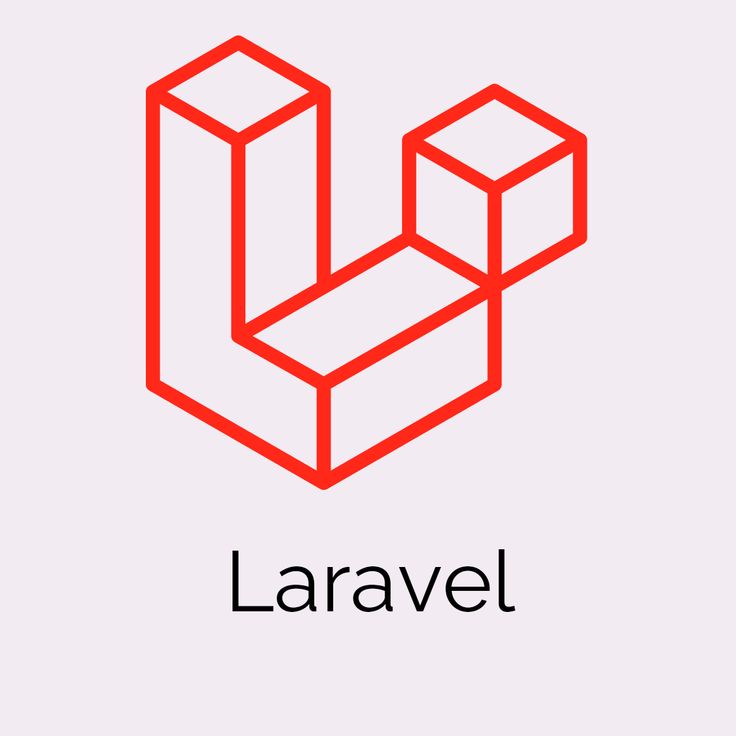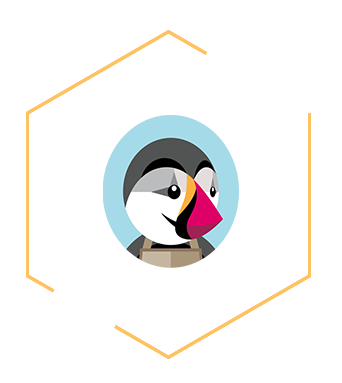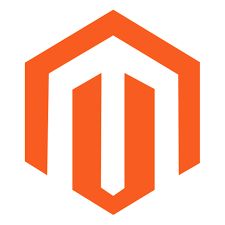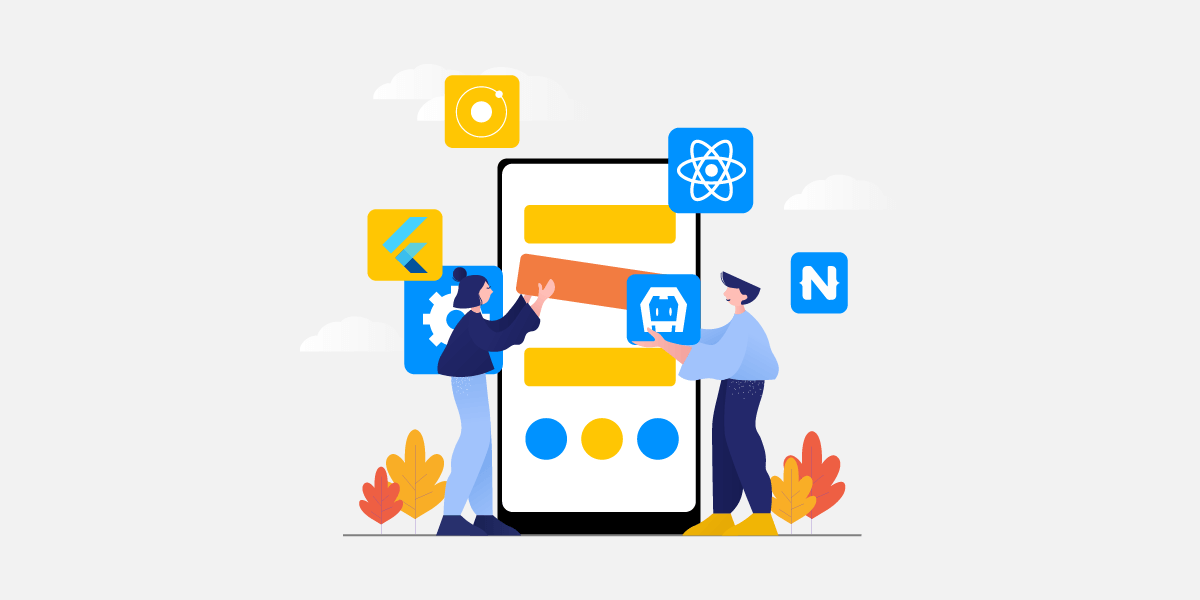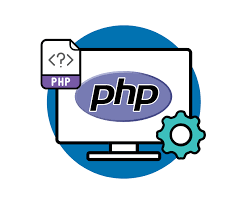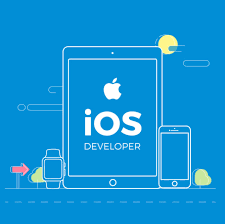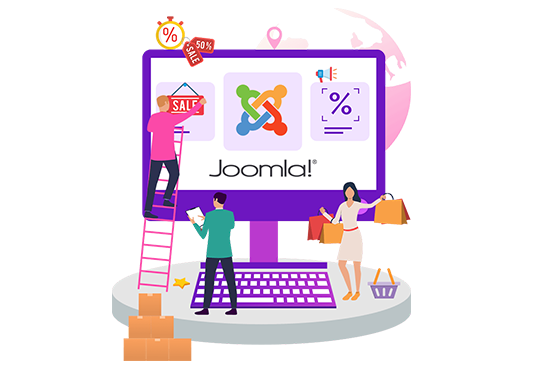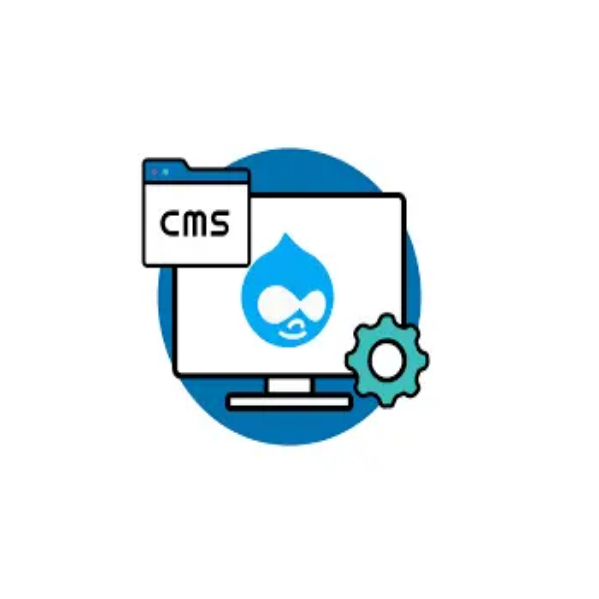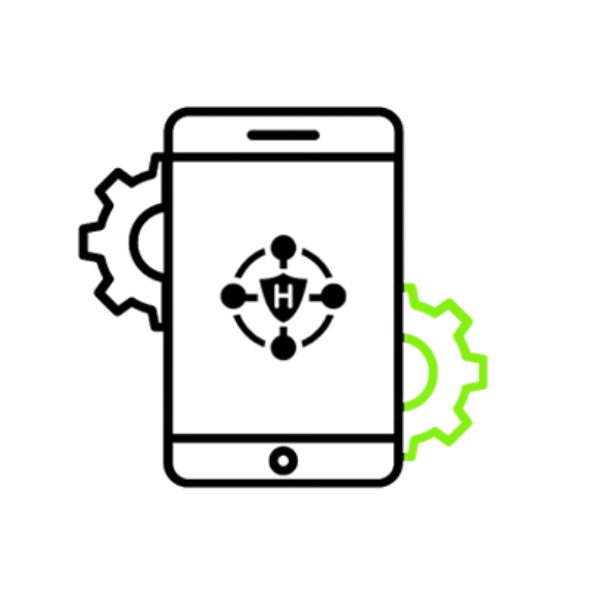- info@einnovention.us
- THIS SITE IS OWNED AND OPERATED BY MUHAMMAD AATIF NADEEM.
Blogpost
Launching Your Sustainable and Eco-Friendly Venture: Einnovention's Affordable and Swift Solution
Read MoreIn a world increasingly focused on sustainability, eco-conscious entrepreneurs have a unique opportunity to make a positive impact while also building successful businesses. If you're passionate about environmental conservation and looking to start a sustainable and eco-friendly venture in 2023, look no further. In this blog post, we'll explore the promising world of sustainable entrepreneurship and how Einnovention can help you kickstart your green dream affordably, swiftly, and effectively.
Why Sustainable and Eco-Friendly Ventures?
Sustainability and eco-friendliness are not just buzzwords; they are becoming essential values for consumers and businesses alike. The demand for eco-conscious products and services is steadily rising, presenting a remarkable opportunity for entrepreneurs who want to make a difference and generate revenue simultaneously.
The Einnovention Advantage
Launching a sustainable business may seem like a daunting task, especially if you're on a tight budget or lack technical expertise. However, Einnovention is here to simplify the journey.
Affordability: Starting at $250 USD
One of the most attractive aspects of Einnovention's services is their affordability. You can commence your sustainable and eco-friendly venture with as little as $250 USD. This initial investment covers everything you need to get started, from website development to hosting and support. Einnovention believes that sustainability should be accessible to all, and their pricing reflects this commitment.
Speedy Launch: 2 to 4 Weeks
In the fast-paced world of entrepreneurship, time is of the essence. You don't want to spend months setting up your eco-friendly business while potential customers are waiting. Einnovention understands this urgency, and that's why they can have your venture up and running in just 2 to 4 weeks. This means you can start making a positive impact on the environment and your income stream sooner than you might think.
Customization: Tailored to Your Vision
Einnovention doesn't offer one-size-fits-all solutions. They recognize that your sustainable business is unique and should reflect your vision and values. They provide customized website development that highlights your eco-friendly products or services, ensuring that your brand stands out in a crowded market.
Technical Expertise: Guiding You Every Step of the Way
Starting a sustainable business might seem complex, but you won't have to navigate it alone. Einnovention's team of experts offers guidance on web development, hosting, and digital marketing. Their technical know-how will empower you to showcase your eco-friendly offerings effectively.
Ongoing Support and Maintenance
Sustainability isn't just about starting; it's about maintaining and growing your eco-friendly business. Einnovention provides continuous support and maintenance to ensure your venture runs smoothly, allowing you to focus on making a positive impact.
Conclusion
Starting a sustainable and eco-friendly venture is not only an opportunity to build a successful business but also a chance to contribute to a greener, healthier planet. With Einnovention's affordable, swift, and tailored solutions, your dream of launching a sustainable business in 2023 can become a reality. Whether you're passionate about sustainable products, renewable energy solutions, or waste reduction services, Einnovention can help you embark on your eco-friendly entrepreneurial journey with ease. Don't wait—take the first step towards a sustainable future today. Your affordable and quick path to sustainability begins with Einnovention.
Top Business Ideas for Entrepreneurs in 2023
Read MoreAs we step into 2023, the entrepreneurial landscape continues to evolve, presenting new opportunities and challenges. For those with the vision and determination to succeed, there are numerous promising business ideas worth exploring. In this blog post, we'll highlight some of the best business ideas for entrepreneurs in 2023.
1. Sustainable and Eco-Friendly Ventures
The global shift toward sustainability and environmental consciousness is opening doors for entrepreneurs. Consider starting a business focused on eco-friendly products, renewable energy solutions, sustainable fashion, or waste reduction services. Consumers are increasingly seeking eco-conscious alternatives, making this a fertile ground for innovative entrepreneurs.
2. Health and Wellness Startups
The health and wellness industry continues to grow, driven by a heightened focus on well-being. Opportunities abound in areas such as fitness coaching, mental health services, personalized nutrition plans, and holistic wellness products. Entrepreneurs can cater to the increasing demand for healthier and happier lives.
3. Tech-Enabled Services
Embracing technology remains a key trend in 2023. Entrepreneurs can tap into this by offering tech-enabled services such as remote work solutions, digital marketing, AI-based applications, and automation tools. Tech-driven businesses have the potential to scale quickly and provide significant value to clients.
4. E-commerce and Online Marketplaces
The e-commerce industry continues to flourish, especially with the rise of online shopping. Consider starting an online store, niche marketplace, or dropshipping business. With the right marketing and product selection, e-commerce can be a lucrative venture.
5. Personal Finance and Investment Services
As people seek to secure their financial futures, businesses offering financial planning, investment advice, robo-advisors, and tax optimization services are in high demand. Entrepreneurs with expertise in finance can help individuals and businesses navigate complex financial decisions.
6. Food and Beverage Innovations
In the ever-evolving food and beverage industry, there are opportunities for entrepreneurs to explore niche markets. This includes creating unique food products, launching specialty cafes or restaurants, or offering meal kit delivery services tailored to specific dietary needs.
7. Senior Care and Services
The aging population presents opportunities in senior care, home healthcare, retirement planning, and senior living facilities. Entrepreneurs can address the growing needs of older adults and their families by providing essential services and support.
8. Education Technology (EdTech)
Online education and skill development remain a significant trend. Entrepreneurs can create and sell online courses, educational apps, or virtual tutoring services. The demand for lifelong learning is on the rise, making EdTech a lucrative sector.
9. Renewable Energy and Green Tech
The transition to renewable energy sources and sustainable technologies is accelerating. Entrepreneurs can explore opportunities in solar panel installation, wind energy solutions, green building materials, and energy-efficient technologies.
10. Niche Entertainment and Experiences
In the realm of entertainment, unique and immersive experiences like virtual reality arcades, themed restaurants, escape rooms, and interactive art installations continue to attract customers seeking novel forms of entertainment.
Conclusion
The entrepreneurial journey in 2023 offers a multitude of exciting possibilities. Success lies in identifying your strengths, passions, and the unique needs of your target audience. Conduct thorough market research, create a solid business plan, and be prepared to adapt to changing trends and consumer preferences. Whether you're passionate about sustainability, tech innovation, or improving people's well-being, there's a business idea waiting for you to transform it into a thriving venture in 2023.
Starting Your E-commerce Journey with Einnovention.us: Affordable and Fast
Read MoreIn the rapidly evolving world of business, it's hard to ignore the significance of e-commerce and online marketplaces. With the convenience of online shopping and the vast reach of the internet, more entrepreneurs are venturing into the e-commerce space. If you're looking to start your own online store, there's no better time than now. Enter Einnovention.us, your one-stop solution for launching an e-commerce business affordably and quickly.
Why E-commerce?
E-commerce has been on the rise for years, but the COVID-19 pandemic further accelerated its growth. The convenience, accessibility, and global reach of online shopping make it an attractive prospect for entrepreneurs. Whether you're planning to sell unique handmade crafts or the latest tech gadgets, e-commerce opens doors to a vast customer base.
Why Einnovention.us?
Starting an e-commerce business may seem daunting, especially for those on a tight budget or with limited technical expertise. This is where Einnovention.us comes to the rescue. With a team of experienced professionals, they offer a range of services to make your e-commerce dreams a reality.
Affordable Pricing
One of the most significant advantages of choosing Einnovention.us is their affordability. In the world of e-commerce, where startup costs can quickly spiral out of control, Einnovention.us offers an attractive alternative. You can kickstart your online store with as little as $250 USD. This minimal initial investment includes everything you need to get started, from website development to hosting and support.
Speedy Launch
In the fast-paced e-commerce landscape, speed matters. You don't want to spend months building your online store while potential customers are shopping elsewhere. With Einnovention.us, your e-commerce business can be up and running in as little as 2 to 4 weeks. This means you can start selling your products and generating revenue much sooner than you might expect.
The Einnovention.us Advantage
Einnovention.us offers a range of services to cater to your e-commerce needs:
Website Development: They will create a customized, user-friendly e-commerce website tailored to your brand and products.
E-commerce Platform: Benefit from their expertise in choosing the right e-commerce platform for your business, ensuring smooth operations and a seamless shopping experience.
Hosting and Security: Your website will be hosted on secure servers, providing both you and your customers with peace of mind.
Support and Maintenance: Ongoing support and maintenance are essential for the smooth operation of your online store, and Einnovention.us has you covered.
Marketing Services: They can assist with marketing strategies to help you reach your target audience and boost your online visibility.
Starting an e-commerce business has never been more accessible or affordable, thanks to Einnovention.us. With a minimal budget of $250 USD and a timeline of just 2 to 4 weeks, you can turn your e-commerce dreams into reality. Don't let a lack of technical expertise or budget constraints hold you back from pursuing your entrepreneurial aspirations. Take the leap into the world of e-commerce with Einnovention.us and watch your online business thrive. Order Now
Internet Marketing
Read MoreTitle: The Power and Potential of Internet Marketing: Navigating the Digital Landscape
In today's fast-paced world, where the Internet has become an integral part of our lives, businesses are presented with an unparalleled opportunity to connect with their target audiences through Internet marketing. This dynamic and ever-evolving field has revolutionized the way companies promote their products and services, enabling them to reach global audiences with just a few clicks. In this blog, we'll dive into the world of internet marketing, exploring its strategies, benefits, and the keys to success in this digital realm.
Understanding Internet Marketing: A Digital Symphony
Internet marketing, often referred to as online marketing or digital marketing, encompasses a wide range of strategies aimed at promoting businesses, products, and services through online channels. From social media and search engines to email campaigns and content creation, it's a symphony of tactics that work together to enhance a brand's online presence.
Key Strategies in Internet Marketing
- Search Engine Optimization (SEO): SEO involves optimizing your website to rank higher in search engine results. This organic approach improves visibility, credibility, and trustworthiness.
- Content Marketing: Creating valuable, relevant, and engaging content helps attract and retain customers. Blog posts, articles, videos, and infographics can all play a role in building brand authority.
- Social Media Marketing: Social platforms provide a direct line of communication with your audience. Crafting compelling posts and engaging with followers can foster a loyal community.
- Pay-Per-Click (PPC) Advertising: This model allows businesses to place ads on search engines or social media platforms and pay only when a user clicks on the ad. It provides quick visibility and targeted reach.
- Email Marketing: Building an email list and sending targeted messages can nurture leads and maintain customer relationships over time.
- Influencer Marketing: Collaborating with influencers who have a substantial online following can extend your brand's reach and credibility.
- Affiliate Marketing: Partnering with affiliates who promote your products in exchange for a commission can boost sales and expand your customer base.
Benefits of Internet Marketing
- Global Reach: The internet knows no geographical boundaries. With the right strategies, you can connect with potential customers worldwide.
- Cost-Effectiveness: Internet marketing often requires a smaller budget compared to traditional advertising methods, making it ideal for startups and small businesses.
- Targeted Audience: Precise targeting options allow you to reach the exact demographic that's likely to be interested in your offerings.
- Measurable Results: Digital marketing provides valuable data and analytics, enabling you to track the effectiveness of your campaigns and make informed decisions.
- Improved Customer Interaction: Social media and online forums provide platforms for direct interactions with customers, fostering trust and loyalty.
Navigating the Digital Landscape: Keys to Success
- Comprehensive Strategy: A successful internet marketing campaign requires a well-rounded approach. Combine multiple strategies to ensure maximum impact.
- Quality Content: Content is king in the online world. Focus on creating valuable and relevant content that resonates with your audience.
- Consistency: Regular updates and interactions are essential to maintaining an engaged online community.
- Data Analysis: Monitor the performance of your campaigns and adjust your strategies based on data insights.
- Adaptability: The digital landscape evolves rapidly. Stay updated with the latest trends and be ready to adapt to changes.
- Ethical Practices: Maintain transparency, honesty, and respect for user privacy in all your online interactions.
Conclusion:
Internet marketing has transformed the way businesses connect with consumers. Its vast array of strategies, global reach, and cost-effectiveness make it an essential tool in today's competitive market. By crafting a well-rounded strategy, producing quality content, and staying attuned to evolving trends, businesses can harness the power of Internet marketing to thrive in the digital era. So, whether you're a startup or an established brand, the digital landscape awaits your creative and strategic prowess.
Corporate Identity
Read MoreUnveiling the Essence of Corporate Identity: Building a Lasting Impression
In the bustling world of business, where competition is fierce and attention spans are fleeting, corporate identity stands as a steadfast beacon guiding companies towards recognition and success. Beyond just a logo or a color scheme, corporate identity encapsulates the very essence of a company's personality, values, and aspirations. In this digital age, where every interaction leaves a digital footprint, crafting a compelling corporate identity has never been more crucial. Join us as we dive into the depths of corporate identity and understand how it shapes a company's journey.
Defining Corporate Identity
Corporate identity is the collective image and perception that a company presents to the world. It encompasses visual elements such as logos, color palettes, typography, and design aesthetics. However, it extends far beyond the visual realm, delving into the company's mission, values, culture, and the emotions it seeks to evoke in its audience.
Imagine a corporate identity as the face of a company. Just like a person's face leaves a lasting impression, a company's identity creates a memorable mark in the minds of consumers, partners, and employees. It serves as a bridge connecting the company's internal essence with its external representation.
The Elements of Corporate Identity
- Visual Identity: This is the most recognizable aspect of corporate identity. A well-designed logo can encapsulate the company's values, history, and aspirations in a single symbol. Color choices and typography also play a significant role in conveying emotions and setting the tone of communication.
- Brand Voice and Messaging: How a company communicates, the language it uses, and the tone it adopts are all part of its identity. A company's voice can be authoritative, friendly, quirky, or empathetic – all of which contribute to forming a unique identity.
- Mission and Values: Corporate identity isn't just about appearances; it's about the soul of the company. The mission statement and core values reflect what the company believes in, guiding its decisions and actions.
- Culture and Employee Experience: A company's culture is integral to its identity. How employees are treated, the work environment, and the company's approach to diversity and inclusion all shape its identity.
- Customer Experience: How a company interacts with its customers leaves a lasting impression. This includes everything from customer service to the packaging of products.
The Power of a Strong Corporate Identity
- Recognition and Recall: A well-crafted corporate identity helps a company stand out in a crowded marketplace. Consumers can recognize the brand from afar and recall their experiences with it.
- Trust and Credibility: A consistent identity portrays professionalism and reliability, building trust with customers and partners. It indicates a company's commitment to its promises.
- Emotional Connection: People are more likely to engage with a brand that resonates with their values and emotions. A strong corporate identity establishes this emotional connection, leading to brand loyalty.
- Employee Morale: A well-defined identity fosters a sense of belonging among employees. They become ambassadors of the brand, proudly representing it in their interactions.
- Differentiation: In a market saturated with similar offerings, a unique corporate identity sets a company apart, making it easier for consumers to choose it over competitors.
Building and Evolving Corporate Identity
Creating a corporate identity is not a one-time task. Companies evolve, markets change, and customer preferences shift. Thus, corporate identity should be adaptable yet consistent. Here's how:
- Research: Understand your target audience, market trends, and competitors. This research will guide the creation of a distinct identity.
- Consistency: Every touchpoint – from your website to social media posts – should reflect the same identity. Consistency fosters trust and recognition.
- Feedback Loop: Listen to customer feedback and adapt. An identity that resonates with your audience will evolve and stay relevant.
- Flexibility: While consistency is key, allow room for minor adaptations to suit different platforms and changing trends.
- Long-Term Vision: A successful corporate identity isn't built overnight. It's a long-term investment that requires commitment and patience.
Conclusion:
Corporate identity isn't just about aesthetics; it's about leaving a lasting impression in a world inundated with information. It's about communicating who you are, what you stand for, and the value you bring to the table. In a rapidly changing business landscape, a well-crafted corporate identity becomes the North Star, guiding companies through uncertainty and towards recognition, trust, and success.
Open source Customization
Read MoreTitle: Exploring the Power of Open Source Customization: Tailoring Solutions to Perfection
In the ever-evolving landscape of technology, open-source software has emerged as a beacon of innovation and collaboration. It empowers developers, businesses, and individuals to harness the collective intelligence of the global community, shaping solutions according to their unique needs. One of the most compelling aspects of open source is customization – the ability to adapt and modify the software to fit specific requirements. In this blog, we'll delve into the world of open-source customization and explore why it's a game-changer for modern software development.
The Open Source Advantage
At its core, open source refers to software whose source code is freely available to anyone. This open nature encourages collaboration, as developers from around the world can contribute to the codebase, fix bugs, and enhance functionalities. Open source projects span a wide spectrum, including operating systems, programming languages, content management systems, and more. This diversity presents endless possibilities for customization.
Tailoring Solutions to Perfection
Open-source customization allows businesses and individuals to tailor the software to meet their exact needs. Off-the-shelf solutions might offer a range of features, but they rarely align perfectly with unique requirements. This is where customization comes into play. By accessing the source code, developers can modify, extend, and even create new functionalities. This flexibility enables companies to create software that addresses their specific pain points and provides a competitive edge.
Benefits of Open Source Customization
- Cost-Effectiveness: Traditional software development can be costly, especially for smaller businesses. Open-source software offers a cost-effective alternative, as the initial investment is often significantly lower. Customization allows you to focus resources on only the features you need, eliminating unnecessary expenses.
- Scalability: As businesses grow, their software needs may evolve. Open-source customization provides the scalability required to accommodate these changes without incurring massive expenses. You can add new features, integrate with other systems, and optimize performance as needed.
- Freedom and Control: Closed-source software often limits your ability to adapt and control the software. Open source customization provides the freedom to shape the software according to your vision. You're not dependent on a single vendor's roadmap; you're in control of your own destiny.
- Community Support: The open-source community is a treasure trove of knowledge and expertise. When customizing open-source software, you can tap into this vast community to seek advice, share ideas, and collaborate on solutions. This support network can significantly accelerate the customization process.
- Security and Transparency: With open-source software, you have complete transparency in the codebase. This transparency enhances security, as you can identify and address potential vulnerabilities more effectively. You're not relying solely on a vendor's word regarding the security of their product.
Challenges to Consider
While open-source customization offers numerous benefits, it's important to acknowledge potential challenges:
- Expertise: Customizing open-source software requires technical expertise. If your team lacks the necessary skills, you might need to invest in training or hire specialized developers.
- Maintenance: Customized solutions need ongoing maintenance. As the original open-source project evolves, you'll need to ensure your customizations remain compatible and functional.
- Upgrades: Upgrading a customized open-source solution can be complex. It requires careful consideration to ensure that your modifications don't conflict with the new version's changes.
Conclusion:
An open source customization is a powerful tool that empowers businesses to create tailored solutions that align perfectly with their needs. The freedom, flexibility, and community support offered by open-source software is unparalleled. While challenges do exist, the benefits far outweigh them, making open-source customization a wise choice for businesses seeking to optimize their software solutions. By harnessing the potential of open-source customization, you can elevate your software to new heights of functionality, efficiency, and innovation.
SEO
Read MoreTitle: Mastering SEO for IT Services: Boost Your Online Presence
Introduction
In the rapidly evolving landscape of Information Technology (IT), staying competitive is paramount. A robust online presence has become an essential tool for IT service providers to showcase their expertise and attract potential clients. Search Engine Optimization (SEO) plays a pivotal role in ensuring that your IT services are discoverable by your target audience. In this blog, we'll delve into the world of SEO for IT services and explore strategies to enhance your online visibility.
Understanding SEO for IT Services
Search Engine Optimization (SEO) involves optimizing your website and online content to rank higher in search engine results pages (SERPs) organically. For IT service providers, SEO holds the key to capturing the attention of businesses and individuals seeking technology solutions. By utilizing effective SEO strategies, you can increase your website's visibility, drive organic traffic, and ultimately convert visitors into clients.
Keyword Research: The Foundation of SEO
Keywords are the building blocks of SEO. Identify relevant keywords and phrases that potential clients might use to search for IT services. Tools like Google Keyword Planner and SEMrush can help you discover high-potential keywords with a reasonable search volume and low competition. Incorporate these keywords naturally into your website's content, including titles, headings, meta descriptions, and body text.
High-Quality Content
In the realm of SEO, content is king. Producing high-quality, informative, and relevant content not only engage your audience but also enhances your website's authority in the eyes of search engines. Create blog posts, case studies, whitepapers, and tutorials that address common IT challenges and provide valuable insights. This not only establishes your expertise but also encourages other websites to link back to your content, boosting your site's credibility and SEO ranking.
Optimize for User Experience
Search engines prioritize websites that offer a seamless user experience. Ensure that your website is mobile-responsive, loads quickly, and is easy to navigate. A well-structured website with clear menus and intuitive design enhances user engagement, reduces bounce rates, and signals to search engines that your website is worth promoting in search results.
Technical SEO for IT Services
Technical SEO focuses on optimizing the technical aspects of your website to improve its search engine ranking. This includes optimizing page load times, implementing proper URL structures, using descriptive alt tags for images, and creating XML sitemaps. Regularly monitor your website's performance using tools like Google Search Console to identify and address technical issues that could affect your SEO efforts.
Local SEO for Targeted Reach
For IT service providers targeting a specific geographical area, local SEO is crucial. Optimize your Google My Business profile with accurate business information, including your location, contact details, and operating hours. Encourage satisfied clients to leave positive reviews, as these can significantly impact your local search ranking.
Backlinks and Authority Building
Backlinks, or links from other reputable websites to yours, are a significant factor in SEO. Work on building relationships with industry influencers, partners, and relevant websites to secure quality backlinks. Guest posting on reputable IT blogs and participating in relevant forums can help you establish your authority in the field and earn valuable backlinks.
Conclusion:
In the competitive world of IT services, a strong online presence can make all the difference. By mastering the art of SEO, IT service providers can effectively showcase their expertise, attract potential clients, and drive business growth. Remember that SEO is an ongoing process that requires continuous effort and adaptation to changing algorithms. By focusing on keyword research, producing high-quality content, optimizing for user experience, and building authoritative backlinks, you can position your IT services for success in the digital realm.
Logo Designing
Read More
Unlocking the Art of Logo Design: Crafting Your Brand's Visual Identity
In today's fast-paced and visually-driven world, a picture is worth more than a thousand words. In the realm of business and branding, this couldn't be truer. A well-designed logo has the power to convey the essence of your brand, evoke emotions, and leave a lasting impression on your audience. Logo design is not just about creating a simple graphic; it's about telling a story that resonates with your target market. So, let's dive into the fascinating world of logo design and discover how to craft a visual identity that speaks volumes about your brand.
Understanding the Significance of a Logo:
A logo is often the first point of contact between your brand and potential customers. It serves as a visual representation of your company's values, mission, and personality. Think about some of the world's most iconic logos – the Apple logo's sleek simplicity, the Nike swoosh's sense of motion, or the golden arches of McDonald's, instantly recognizable and deeply ingrained in our collective consciousness. These symbols have transcended mere corporate imagery; they've become a part of our culture.
The Elements of Effective Logo Design:
- Simplicity: The saying "less is more" couldn't be truer in logo design. A simple logo is easily recognizable and memorable. Avoid clutter and intricate details that might get lost or confuse your audience.
- Relevance: Your logo should reflect your brand's identity and industry. It should resonate with your target audience and give them a sense of what your business stands for.
- Versatility: Your logo will appear on a variety of platforms – from business cards to billboards, and websites to social media profiles. It should look great and remain recognizable regardless of size or medium.
- Memorability: A well-designed logo sticks in the minds of your audience. Consider the McDonald's arches – they're easy to remember and instantly evoke associations with the brand.
- Timelessness: Trends come and go, but a logo is a long-term investment. Aim for a design that won't quickly become outdated.
- Appropriateness: Different colors, fonts, and shapes convey different emotions. Choose elements that align with your brand's personality and the message you want to convey.
The Logo Design Process:
Creating a compelling logo requires careful planning, creativity, and an understanding of your brand's essence. Here's a general outline of the logo design process:
- Research: Understand your target audience, your competitors, and your brand's values. This research will guide the design direction.
- Conceptualization: Brainstorm ideas based on your research. Think about symbols, colors, and shapes that resonate with your brand's identity.
- Sketching: Start with pen and paper. Sketch out different concepts without worrying too much about details at this stage.
- Digital Design: Bring your sketches into design software like Adobe Illustrator. Create vector graphics that can be scaled without losing quality.
- Color and Typography: Choose colors that align with your brand's personality and values. Select fonts that are legible and complement your logo's style.
- Feedback and Iteration: Share your design with others and gather feedback. Make necessary adjustments based on the input.
- Finalization: Once you've refined your design, you have your final logo! Ensure you have versions that work in both color and black and white.
Building a Lasting Brand Identity:
Your logo is just one piece of the puzzle. To create a cohesive brand identity, your logo design should extend to all aspects of your business – from your website to packaging, social media profiles, and marketing materials. Consistency is key. Your brand's visual elements should work together harmoniously to tell a coherent story.
In Conclusion:
Logo design is a blend of art, psychology, and strategy. It's not just about creating a pretty picture; it's about encapsulating your brand's values and resonating with your target audience. A well-designed logo can become a symbol of trust, recognition, and loyalty. So, whether you're a start-up crafting your visual identity or an established business considering a rebrand, remember that a carefully designed logo has the power to make a lasting impression that goes beyond aesthetics.
Web Design
Read More
Title: The Art and Science of Website Designing: Creating Digital Masterpieces
In today's digital age, where the online presence of businesses and individuals is paramount, website designing has emerged as a critical art form and a strategic tool for success. A well-designed website isn't just about aesthetics; it's a blend of creativity, usability, and functionality. In this blog, we'll delve into the intricacies of website designing, exploring the essential elements that contribute to crafting captivating and effective digital platforms.
1. First Impressions Matter: Aesthetic Appeal
Imagine walking into a beautifully designed store; the same principle applies to websites. The first impression matters, and aesthetics play a significant role. A visually appealing website captures the user's attention and encourages them to explore further. Color schemes, typography, imagery, and layout should all align with the brand's identity and message, creating a cohesive and memorable user experience.
2. User-Centric Design: Navigation and Usability
Aesthetic appeal is just the tip of the iceberg. A well-designed website is intuitive and user-friendly. Navigation should be seamless, guiding users to their desired destinations without confusion. Consider user personas, and organize content logically. Incorporating clear calls-to-action (CTAs) and a consistent layout aids users in finding what they're looking for effortlessly.
3. Responsive Design: Adapting to All Devices
In a mobile-centric world, responsive design is non-negotiable. A website must adapt seamlessly to various screen sizes, ensuring an optimal user experience across smartphones, tablets, and desktops. A responsive design boosts user engagement and plays a role in search engine ranking, as Google considers mobile-friendliness a ranking factor.
4. Loading Speed: Patience is a Virtue
In a fast-paced digital era, users have little patience for slow-loading websites. Page speed not only affects user satisfaction but also impacts SEO. Optimizing images, leveraging browser caching, and minimizing unnecessary code are some strategies to enhance loading speed.
5. Content is King: Engaging and Informative
A visually appealing website is a good start, but compelling content keeps users engaged. High-quality, relevant content that addresses users' needs and questions is crucial. Incorporate a blog, articles, videos, or other forms of media that resonate with your audience. Remember, valuable content establishes credibility and encourages return visits.
6. SEO: The Pathway to Discoverability
What good is a beautifully designed website if no one can find it? Search Engine Optimization (SEO) is the key to enhancing your website's visibility on search engines. Incorporate relevant keywords, optimize meta tags, and structure your content for both users and search engines. A well-optimized site increases organic traffic, contributing to its overall success.
7. Branding Consistency: Reflecting Identity
A website is an extension of a brand's identity. Consistency in branding, including logo placement, color scheme, and tone of voice, reinforces brand recognition. Ensure that the website's design aligns with the overall brand strategy to create a cohesive online presence.
8. Interactive Elements: Engagement and Interactivity
Engaging users through interactive elements can elevate the user experience. Incorporate features such as forms, quizzes, polls, and interactive graphics that encourage user participation. These elements not only provide value but also make the website more memorable.
9. Accessibility for All: Inclusivity Matters
Website accessibility is often overlooked but is of paramount importance. Ensure that your website is accessible to all users, including those with disabilities. Implement features like alt text for images, proper heading structures, and keyboard navigation to make your website usable for everyone.
10. Continuous Improvement: Analyze and Adapt
Website designing is an ongoing process. Regularly analyze website analytics to understand user behavior, identify pain points, and make informed design decisions. A/B testing different elements can lead to data-driven improvements that enhance user engagement and conversion rates.
Conclusion:
Website designing is a harmonious blend of art and science. It's about creating visually captivating platforms that prioritize user experience and functionality. By incorporating aesthetics, usability, responsiveness, SEO, and other essential elements, you can craft a digital masterpiece that leaves a lasting impact on visitors and contributes to the overall success of your brand in the online realm.
.Net Development
Title: Unleashing the Power of .NET in Web and CMS Development
Introduction
In the ever-evolving digital landscape, creating dynamic and engaging websites and content management systems (CMS) is essential for businesses and organizations looking to establish a strong online presence. The .NET framework has emerged as a powerhouse in web and CMS development, offering developers a versatile and robust platform to build feature-rich applications. In this blog, we'll delve into the world of .NET development, exploring its significance in web and CMS development and showcasing its potential to create exceptional online experiences.
The Essence of .NET in Web Development
- Versatile Platform: .NET is a versatile platform that supports multiple programming languages like C#, F#, and VB.NET, allowing developers to choose the language they're most comfortable with. This flexibility ensures that developers can work efficiently and write clean, maintainable code.
- Rapid Development: The .NET framework provides a wealth of pre-built libraries, components, and tools that streamline development. This accelerates the development process, enabling developers to create feature-rich web applications in a shorter span of time.
- Scalability: .NET's architecture is designed with scalability in mind. It easily accommodates growing user bases and increasing demands, making it an ideal choice for web applications that need to handle heavy traffic loads.
- Security: Security is a top priority in web development, and .NET offers robust security features like built-in authentication and authorization mechanisms. This ensures that web applications developed using .NET are better equipped to withstand security threats.
- Cross-Platform Capabilities: With the introduction of .NET Core (now .NET 5 and later versions), cross-platform development has become a reality. Developers can now build web applications that run seamlessly on different operating systems, expanding the reach of their projects.
The Power of .NET in CMS Development
- Extensibility: CMS development often requires a system that can be easily extended with custom functionality. .NET's object-oriented nature and extensibility features allow developers to create custom modules, plugins, and themes, tailoring the CMS to specific requirements.
- Content Modeling: In CMS development, content modeling is crucial to create structured and organized content. .NET allows developers to design flexible content models, facilitating the management and presentation of diverse content types.
- Personalization: Modern CMS platforms thrive on delivering personalized user experiences. .NET enables developers to harness user data and preferences to provide tailored content, enhancing engagement and user satisfaction.
- Integration Capabilities: Many organizations require their CMS to integrate seamlessly with other systems and services. .NET's robust integration capabilities, including APIs and third-party integrations, empower developers to create CMS solutions that seamlessly connect with various tools and services.
- Performance: Slow-loading websites can deter users and impact SEO rankings. With .NET's optimization features, developers can create CMS solutions that deliver exceptional performance, ensuring quick page load times and smooth user interactions.
Real-World Applications
Several well-known websites and CMS platforms have leveraged the power of .NET to create remarkable online experiences:
- Umbraco: A popular open-source CMS built on .NET, Umbraco provides a flexible and user-friendly environment for managing web content.
- Sitecore: A leading enterprise-level CMS, Sitecore utilizes .NET to deliver personalized digital experiences and manage complex content structures.
- DNN (formerly DotNetNuke): DNN is a versatile CMS platform that enables businesses to create and manage content-rich websites using .NET technologies.
Conclusion:
The .NET framework has proven to be a game-changer in web and CMS development, offering a rich set of features, tools, and capabilities that empower developers to create innovative and high-performing online solutions. Its flexibility, scalability, security, and cross-platform compatibility make it an ideal choice for modern web and CMS development projects. Whether you're building a dynamic website or a feature-rich content management system, embracing .NET can propel your development efforts to new heights, ensuring you provide exceptional online experiences to your users.
Read MoreCodeigniter
Read MoreTitle: Exploring CodeIgniter for Web and CMS Development: A Comprehensive Guide
Introduction: In the ever-evolving landscape of web development, finding a framework that strikes the perfect balance between flexibility and efficiency is crucial. Enter CodeIgniter – a powerful PHP framework renowned for its lightweight structure, robust features, and impressive capabilities in building both websites and content management systems (CMS). In this blog, we'll dive into the world of CodeIgniter, exploring its benefits, features, and how it can be harnessed for both web development and CMS creation.
Understanding CodeIgniter: CodeIgniter is an open-source PHP framework designed to simplify and accelerate web application development. It follows the Model-View-Controller (MVC) architectural pattern, which encourages clean separation of concerns and enhances code maintainability. Its lightweight footprint ensures quick loading times and minimal resource consumption, making it an ideal choice for projects of various sizes.
Benefits of CodeIgniter:
- Ease of Learning: CodeIgniter's user-friendly documentation and straightforward syntax make it accessible to both beginners and experienced developers.
- MVC Architecture: The MVC pattern enhances code organization, making it easier to manage different components of a web application.
- Security: CodeIgniter includes built-in features for input validation, cross-site scripting (XSS) protection, and other security measures, reducing the risk of vulnerabilities.
- Flexibility: The framework doesn't enforce strict coding rules, allowing developers to adopt their preferred coding style and structure.
- Modular Approach: CodeIgniter supports modular development, enabling developers to create reusable components and easily integrate third-party libraries.
- Caching: Caching mechanisms help optimize application performance by reducing database queries and speeding up page loading times.
Web Development with CodeIgniter: CodeIgniter offers a seamless environment for building dynamic and interactive websites. Here's a step-by-step overview of the process:
- Installation: Download and install CodeIgniter on your server. The framework's intuitive installation process will guide you through the initial setup.
- Routing: Define URL routes to map specific URLs to controller functions, ensuring clean and user-friendly URLs.
- Controllers: Create controllers to handle user requests and logic. The controllers interact with models and views to manage data and presentation.
- Models: Models handle database interactions, data validation, and business logic. They abstract the database structure, making it easier to manage and maintain data.
- Views: Views are responsible for presenting data to users. They use HTML templates combined with PHP code to dynamically generate content.
- Form Validation: CodeIgniter simplifies form validation with its built-in validation library, enhancing user input security and accuracy.
- Templates: Utilize templating libraries to ensure consistent layouts across multiple pages, enhancing the user experience.
- Third-Party Libraries: Integrate third-party libraries and extensions to enhance functionality, from image manipulation to authentication systems.
Creating a CMS with CodeIgniter: CodeIgniter's flexibility and modular approach make it an excellent choice for building content management systems. Here's a high-level roadmap:
- Database Schema: Design a robust database schema to store content, user information, and system settings.
- Admin Panel: Develop an intuitive admin panel where content creators can manage and publish articles, images, and other media.
- User Authentication: Implement a secure user authentication system, allowing various user roles with different levels of access.
- Content Management: Build modules to create, edit, and delete content. Implement WYSIWYG editors for rich content creation.
- Frontend Templates: Design and implement frontend templates that display the published content in an appealing and organized manner.
- User Interaction: Integrate user comment systems, ratings, and social sharing functionalities to encourage engagement.
- SEO Optimization: Implement SEO best practices such as friendly URLs, meta tags, and XML sitemaps for better search engine visibility.
- Caching Mechanisms: Employ caching mechanisms to improve website performance and reduce database load.
Conclusion: CodeIgniter emerges as a versatile tool for web development and CMS creation, offering a blend of simplicity, flexibility, and robustness. Whether you're a novice developer looking to kickstart your web journey or an experienced programmer seeking an efficient solution, CodeIgniter provides a solid foundation for crafting engaging websites and powerful content management systems. Its ability to seamlessly adapt to various project scopes and requirements makes it a valuable addition to any developer's toolkit. So, embrace CodeIgniter and embark on a journey of efficient and effective web and CMS development.
Drupal
Read More
Title: Unveiling the Power of Drupal for Web and CMS Development
In the ever-evolving landscape of web development, content management systems (CMS) plays a pivotal role in creating and managing digital content effectively. Among the myriad CMS options available, Drupal stands out as a robust and versatile platform that empowers developers and content creators alike. With its extensive features and flexibility, Drupal has become a go-to choice for businesses and individuals seeking a powerful web development solution. In this blog post, we'll delve into the world of Drupal web and CMS development, exploring its key features, benefits, and why it remains a preferred choice for building stunning websites.
What is Drupal?
Drupal is an open-source content management system that enables users to build, manage, and organize digital content with ease. It's flexible architecture and modular design make it highly customizable, allowing developers to create a wide range of websites – from simple blogs to complex e-commerce platforms and enterprise-level portals. Drupal's vibrant community contributes to its growth, ensuring that the platform stays up-to-date with the latest web development trends and security standards.
Key Features of Drupal:
- Modularity and Customization: Drupal's modular structure allows developers to extend its functionality by adding or creating custom modules. This means that you can tailor your website to meet your exact needs, without being limited by pre-packaged features.
- Content Management: Drupal provides a user-friendly interface for managing content. Content creators can easily create, edit, and organize various types of content, such as articles, images, videos, and more.
- Flexibility: Whether you're building a personal blog or a complex enterprise website, Drupal can handle it all. Its flexible architecture allows you to adapt the platform to various requirements.
- Scalability: Drupal is known for its ability to handle large volumes of content and traffic. This scalability makes it an excellent choice for websites that expect rapid growth.
- SEO-Friendly: The platform is designed with search engine optimization (SEO) in mind. With built-in SEO features and the ability to add SEO modules, Drupal-powered sites have a better chance of ranking well in search engine results.
- Multilingual Support: For global businesses, Drupal offers robust multilingual capabilities, enabling you to create and manage content in multiple languages seamlessly.
- Security: Drupal places a strong emphasis on security. Its dedicated security team actively monitors vulnerabilities and releases timely updates, ensuring your website's safety.
Why Choose Drupal for Web Development:
- Versatility: From small businesses to large enterprises, Drupal's versatility makes it suitable for a wide range of projects. Whether you're building a corporate website, an e-commerce platform, or a community portal, Drupal can accommodate your needs.
- Customization: The ability to customize every aspect of your website sets Drupal apart. Developers have the freedom to create unique layouts, features, and functionalities tailored to their project's requirements.
- Active Community: Drupal's thriving community of developers, designers, and contributors ensures that the platform remains up-to-date, secure, and equipped with the latest features and modules.
- Scalability and Performance: As your website grows, Drupal can grow with you. Its scalability and performance optimization features allow for seamless expansion without sacrificing speed or user experience.
- Future-Proofing: Drupal's forward-looking architecture ensures that your website will remain relevant and adaptable to emerging web technologies and trends.
Conclusion:
Drupal's reputation as a powerful CMS and web development platform is well-deserved. Its flexibility, customization options, and scalability make it an excellent choice for projects of varying sizes and complexities. With a supportive community and a commitment to security and innovation, Drupal continues to be a top choice for businesses and developers looking to create exceptional online experiences. Whether you're a seasoned developer or new to the world of web development, Drupal offers a plethora of tools and resources to bring your digital vision to life. So, unleash the power of Drupal and embark on a journey to build stunning, dynamic, and feature-rich websites.
WordPress
Read More
Title: Unveiling the Power of WordPress for Web and CMS Development
Introduction
In the ever-evolving landscape of web development and content management systems (CMS), WordPress has emerged as a powerhouse that empowers millions of websites worldwide. Whether you're a seasoned developer or just starting your journey, understanding the potential and versatility of WordPress is essential. In this blog, we will delve into the realm of WordPress web and CMS development, exploring its features, benefits, and impact on the digital world.
The WordPress Revolution
WordPress initially launched as a blogging platform in 2003, has grown into a comprehensive CMS that caters to a wide spectrum of websites – from personal blogs to e-commerce giants and corporate websites. Its growth can be attributed to its user-friendly interface, robust customization options, and an active community that continually contributes themes, plugins, and updates.
Benefits of Using WordPress for Web and CMS Development
1. User-Friendly Interface
WordPress's intuitive dashboard enables users with varying technical backgrounds to manage and create content effortlessly. Whether you're publishing a blog post, adding images, or updating products on an e-commerce site, the user interface is designed to simplify these tasks.
2. Flexible Customization
With thousands of free and premium themes available, WordPress allows developers to create visually appealing websites tailored to specific niches. Additionally, the platform's flexibility extends to plugins that enhance functionality – from SEO optimization to e-commerce integration.
3. SEO-Friendly Nature
Search engine optimization (SEO) is crucial for any website's visibility. WordPress's built-in features, along with plugins like Yoast SEO, enable developers to optimize their content for search engines, boosting their chances of ranking higher in search results.
4. Responsive Design
In an era dominated by mobile devices, responsive web design is non-negotiable. WordPress themes are often designed to be responsive, ensuring that your website looks and functions seamlessly across various screen sizes and devices.
5. Active Community and Support
WordPress boasts a vast community of developers, designers, and users who actively contribute to its growth. This vibrant community ensures that the platform is constantly updated, secure, and enriched with new features.
WordPress as a CMS
Content Management Systems streamline the process of creating, organizing, and publishing digital content. WordPress excels in this role due to its user-friendly nature and robust capabilities.
1. Easy Content Creation and Publishing
WordPress's WYSIWYG (What You See Is What You Get) editor simplifies content creation. Writers can draft and format content without needing to delve into complex coding.
2. Media Management
WordPress offers a seamless way to manage media – from images and videos to audio files. This makes it an excellent choice for multimedia-rich websites.
3. User Management
For websites that require multiple users with varying access levels, WordPress provides comprehensive user management. Administrators can assign roles like authors, editors, and administrators, ensuring a controlled content creation process.
4. E-Commerce Capabilities
WordPress, in combination with plugins like WooCommerce, can transform a website into a fully functional e-commerce platform. This allows businesses to sell products and services online with ease.
The Future of WordPress Development
As technology evolves, WordPress continues to adapt to new trends and challenges. With the advent of AI, voice search, and immersive technologies, WordPress developers have the opportunity to integrate cutting-edge features into their websites.
Conclusion:
WordPress's evolution from a simple blogging platform to a versatile CMS underscores its significance in the world of web development. Its user-friendly interface, customization options, and active community make it a preferred choice for developers and website owners alike. Whether you're a novice or an expert, WordPress's vast array of features ensures that your web development journey is both exciting and rewarding. Embrace the power of WordPress, and embark on a journey to create stunning and functional websites that leave a lasting impact on the digital landscape.
Joomla
Read MoreTitle: Exploring the World of Joomla: Web and CMS Development
In today's fast-paced digital landscape, having a powerful and flexible content management system (CMS) is essential for effectively managing and maintaining websites. Joomla, a popular open-source CMS, has been a cornerstone of web development for over a decade. With its user-friendly interface, robust features, and vibrant community, Joomla continues to empower developers to create stunning websites and applications. In this blog, we'll dive into the realm of Joomla web and CMS development, exploring its features, benefits, and how it's shaping the future of the internet.
Understanding Joomla: A Brief Overview
Joomla is a free, open-source CMS that allows developers and content creators to build, manage, and publish websites with ease. It is written in PHP and utilizes a MySQL database to store content. One of Joomla's standout features is its flexibility – it can be used to develop websites of varying complexities, from simple blogs to intricate e-commerce platforms and community portals.
The Building Blocks of Joomla Development
- Extensions: Joomla's strength lies in its extensive library of extensions, which are plugins, modules, and components that extend the core functionality. Whether you need a photo gallery, an e-commerce system, or a forum, there's likely an extension available to suit your needs.
- Templates: Joomla offers a wide range of templates that determine the visual design of your website. These templates can be customized to match your brand's identity and provide a unique user experience.
- User-Friendly Interface: Joomla boasts an intuitive admin panel that simplifies content creation, organization, and management. Even users with limited technical skills can easily publish and edit content.
- Multilingual Support: In our globalized world, multilingual websites are crucial. Joomla offers built-in support for multiple languages, making it easy to reach a broader audience.
- SEO-Friendly: Joomla has built-in SEO features that aid in optimizing your website for search engines. This includes customizable metadata, friendly URLs, and other tools to improve your site's visibility.
The Benefits of Joomla Development
- Open Source: As an open-source CMS, Joomla is free to use and modify. This makes it a cost-effective option for businesses and developers, eliminating the need for expensive licensing fees.
- Customization: With its diverse extensions and templates, Joomla enables developers to create websites tailored to specific requirements. This level of customization ensures that your site meets your exact needs and objectives.
- Strong Community: The Joomla community is a supportive and active group of developers, designers, and users who collaborate to enhance the platform. This community-driven approach ensures that Joomla remains up-to-date, secure, and continuously improved.
- Security: Joomla takes security seriously, and its development team actively addresses vulnerabilities and releases updates to keep websites safe from cyber threats.
Joomla's Impact on Web Development
Joomla has played a significant role in shaping the web development landscape. Its ease of use and flexibility have allowed countless businesses, organizations, and individuals to establish an online presence without the need for extensive technical expertise. From corporate websites to educational platforms and online communities, Joomla has enabled diverse online projects to flourish.
Conclusion:
In the dynamic world of web development, Joomla stands as a powerful tool for creating, managing, and maintaining websites. Its user-friendly interface, extensive library of extensions, and strong community support make it an excellent choice for both beginners and experienced developers. As the internet continues to evolve, Joomla's adaptability and robust features ensure its place as a fundamental player in the CMS realm, continuing to shape the way we experience and interact with online content. So, whether you're a business owner looking to establish an online presence or a developer seeking a versatile CMS, Joomla has something to offer everyone.
Yii FrameWork
Read MoreTitle: Exploring Yii Framework for Web and CMS Development
In the ever-evolving landscape of web development, choosing the right framework can make all the difference. One such framework that has gained popularity for its efficiency and robustness is Yii (pronounced as "yee" or [ji:] like the Chinese word for "simple"). Yii, an open-source PHP framework, not only simplifies the process of web application development but also provides powerful tools for Content Management System (CMS) development. In this blog, we'll take a closer look at the Yii framework and its capabilities for web and CMS development.
Introduction to Yii Framework
Yii is a high-performance PHP framework designed to help developers create web applications quickly and efficiently. Known for its "Don't Repeat Yourself" (DRY) principle and powerful caching support, Yii streamlines the development process by offering a rich set of features right out of the box. Its component-based architecture, security features, and strong support for various database systems make it a preferred choice for developers worldwide.
Benefits of Using Yii for Web Development
Rapid Development: Yii's scaffolding and code generation tools expedite the development process. This allows developers to focus on building unique features and functionalities rather than starting from scratch.
- Component-Based Architecture:
Yii follows a modular approach, where various components can be integrated seamlessly. This promotes code reusability and maintainability, enabling developers to work efficiently on different parts of the application.
- Security Features:
Yii incorporates a range of security measures such as input validation, output filtering, and prevention of SQL injection and cross-site scripting attacks. Its authentication and authorization system helps in securing applications from potential threats.
- Caching Support:
Yii provides built-in support for data caching, fragment caching, and page caching, which significantly enhance the performance of web applications by reducing database queries and processing time.
- RESTful APIs:
For applications that require a robust API layer, Yii's RESTful API development capabilities simplify the process of creating APIs that adhere to best practices and industry standards.
Yii as a CMS Development Platform
Apart from web application development, Yii also offers a strong foundation for building Content Management Systems. Here's how Yii makes CMS development a breeze:
- Customizability:
Yii allows developers to create highly customizable CMS solutions tailored to specific needs. With its modular structure, different components can be extended or replaced, making it easy to add new features and functionalities.
- Theming:
Yii's theming support enables developers to create visually appealing and consistent user interfaces. Themes can be created and applied easily, allowing CMS users to change the look and feel of their websites without affecting the underlying functionality.
- Extensibility:
Yii's extension ecosystem is rich, offering various plugins and extensions for CMS development. This enables developers to integrate features like user management, media handling, and e-commerce functionality seamlessly.
- Multilingual Support:
For CMS solutions that target a global audience, Yii's built-in internationalization (i18n) and localization (l10n) features facilitate the creation of multilingual websites, expanding the reach and impact of the CMS.
- Performance Optimization:
Yii's caching mechanisms not only enhance the speed of content delivery but also ensure a smooth and efficient user experience. This is crucial for CMS platforms that manage a vast amount of content.
Getting Started with Yii
If you're interested in exploring the Yii framework for web and CMS development, here's a basic roadmap to help you get started:
- Installation: Begin by installing Yii using Composer, a popular PHP dependency manager.
- Project Setup: Create a new Yii project and configure essential settings, such as the database connection and application components.
- Model-View-Controller (MVC) Structure: Familiarize yourself with Yii's MVC architecture, which separates the application into model (data), view (presentation), and controller (interaction) components.
- Code Generation: Use Yii's code generation tools to create models, controllers, and views automatically, saving you time and effort.
- Theming and Extensions: Explore Yii's theming options and integrate extensions to enhance the functionality of your web application or CMS.
- Security Measures: Implement Yii's security features, such as input validation and authentication, to safeguard your application from potential threats.
- Performance Optimization: Leverage Yii's caching mechanisms to optimize the performance of your application, ensuring a smooth user experience.
Conclusion:
Yii framework's versatility and feature-rich ecosystem make it an excellent choice for both web application and CMS development. Its rapid development tools, modular architecture, and security measures empower developers to create robust and secure solutions efficiently. Whether you're building a dynamic web application or a content-rich CMS, Yii's capabilities are bound to streamline your development process and deliver outstanding results. So, why not embark on your Yii journey today and experience the power of simplicity in web and CMS development?
CakePHP
Read MoreTitle: Exploring the Power of CakePHP in Web and CMS Development
In the world of web development, creating robust and feature-rich websites and content management systems (CMS) is a constant endeavor. One technology that has stood the test of time and proven its worth in this landscape is CakePHP. With its elegant framework, CakePHP offers developers a seamless experience in building dynamic web applications and efficient content management systems. In this blog, we'll delve into the world of CakePHP and its capabilities in web and CMS development.
Understanding CakePHP: A Brief Overview
CakePHP is an open-source, rapid development framework for PHP, designed to make building web applications faster, simpler, and more streamlined. It follows the Model-View-Controller (MVC) architectural pattern, which separates an application into three interconnected components: the Model (for data handling and manipulation), the View (for user interface), and the Controller (for managing user interactions).
The Advantages of Using CakePHP
- Rapid Development: CakePHP's conventions and code generation features accelerate development time. Developers can create prototypes swiftly and focus on implementing application-specific features.
- MVC Architecture: The MVC architecture promotes the separation of concerns, making code more organized, maintainable, and easier to collaborate on among development teams.
- ORM (Object-Relational Mapping): CakePHP's built-in ORM simplifies database interactions. Developers can work with databases using a natural, object-oriented syntax rather than writing raw SQL queries.
- Security Measures: CakePHP incorporates built-in security features such as cross-site scripting (XSS) prevention, input validation, and protection against SQL injection attacks.
- Extensive Libraries: CakePHP boasts a wide range of libraries, components, and plugins that accelerate development by providing pre-built functionalities, from authentication to email handling.
CakePHP in Web Development
CakePHP offers a plethora of tools and features that make it an excellent choice for web application development:
- Authentication and Authorization: CakePHP's authentication and authorization components enable developers to implement user authentication, access control, and role-based permissions effortlessly.
- Form Handling: The form helper simplifies form creation, validation, and data binding, reducing the complexities of handling user input.
- Routing: CakePHP's routing system facilitates the creation of clean, SEO-friendly URLs, enhancing the user experience and search engine visibility.
- Caching: Caching mechanisms like file, memory, and database caching help optimize website performance, resulting in faster load times and improved user engagement.
CakePHP in CMS Development
Content Management Systems play a crucial role in managing digital content efficiently. CakePHP can be harnessed to build powerful and adaptable CMS solutions:
- Custom Content Types: With CakePHP, developers can easily create custom content types, allowing CMS users to manage diverse content such as articles, images, videos, and more.
- Flexible Theming: CakePHP's templating system simplifies the process of creating and managing themes, giving CMS developers the ability to customize the look and feel of websites easily.
- User-Friendly Interfaces: Using CakePHP, developers can design intuitive and user-friendly admin interfaces, empowering content editors to manage and update website content effortlessly.
- Dynamic Content Handling: CakePHP's dynamic data handling capabilities enable the creation of dynamic pages, menus, and content blocks, enhancing the website's versatility.
Conclusion:
CakePHP's remarkable features, along with its adherence to best practices in web development, make it a solid choice for building both web applications and content management systems. Its MVC architecture, ORM, security measures, and extensive libraries contribute to an efficient development process and a secure end product.
Whether you're developing a dynamic web application or a feature-rich CMS, CakePHP's capabilities can help you achieve your goals while ensuring code quality, maintainability, and scalability. As technology continues to evolve, CakePHP remains a reliable companion for developers who aspire to create exceptional digital experiences.
Laravel
Read MoreTitle: Exploring the Power of Laravel for Web and CMS Development
Introduction
In the ever-evolving landscape of web development, choosing the right framework can significantly impact the success of a project. Laravel, a PHP framework, has gained immense popularity due to its elegant syntax, robust features, and vibrant community. Notably, Laravel's capabilities extend beyond traditional web development, making it an excellent choice for Content Management System (CMS) development as well. In this blog, we'll delve into the world of Laravel and its role in web and CMS development.
Laravel: A Brief Overview
Laravel, created by Taylor Otwell in 2011, has quickly risen to prominence as a leading PHP framework. It is known for its simplicity, expressive syntax, and emphasis on developer productivity. Laravel follows the Model-View-Controller (MVC) architectural pattern, making it easier to organize code and separate concerns.
Powerful Features for Web Development
- Eloquent ORM: Laravel's Eloquent ORM simplifies database interactions by providing an intuitive syntax for defining and querying database models. This allows developers to focus on business logic rather than dealing with complex SQL queries.
- Routing and Middleware: Laravel's routing system enables developers to define clean and understandable URLs for their applications. Middleware enhances security and allows for handling HTTP requests at various stages, such as authentication and input validation.
- Blade Templating Engine: Blade offers a powerful templating engine that allows developers to create dynamic views without cluttering the code with PHP logic. It supports layouts, includes, and conditional statements for building reusable and elegant UI components.
- Authentication and Authorization: Laravel simplifies user authentication and role-based authorization with built-in features like authentication scaffolding, guards, and policies, ensuring secure access control to application resources.
- Artisan CLI: The Artisan command-line interface automates repetitive tasks, such as generating boilerplate code, creating migration scripts, and running tests. This boosts developer productivity and maintains consistency across projects.
Laravel as a CMS Development Platform
Laravel's versatility extends beyond standard web development to CMS development. With its modular architecture and rich ecosystem, Laravel provides a solid foundation for building robust and feature-rich content management systems.
- Packages and Extensions: Laravel's package ecosystem offers a plethora of extensions and plugins to add CMS-specific functionalities. Popular packages like "Laravel Nova" provide an administration panel for managing content, while "Voyager" offers an intuitive interface for creating custom admin panels.
- Customization and Scalability: CMS development often requires tailoring solutions to specific content types and user needs. Laravel's modular architecture allows developers to create custom modules, ensuring that the CMS remains scalable and adaptable to evolving requirements.
- API Integration: As modern CMSs often need to interact with external services and APIs, Laravel's support for RESTful APIs and tools like Laravel Sanctum facilitate seamless integration with third-party applications and services.
- Multi-language Support: Many CMSs cater to diverse audiences, necessitating multi-language support. Laravel's localization features simplify the process of translating content and providing a consistent experience for users worldwide.
Conclusion:
In the realm of web and CMS development, Laravel stands out as a versatile and robust framework. Its expressive syntax, rich ecosystem, and strong community support make it an ideal choice for developing dynamic web applications and content management systems. Whether you're creating a personal blog, an e-commerce platform, or a complex CMS, Laravel's features empower developers to build efficient and maintainable solutions. As the technology landscape continues to evolve, Laravel remains a powerful tool for crafting modern and user-centric web experiences.
PHP
Read MoreTitle: Exploring the Dynamic Duo of Web Development: PHP and CMS
In the vast realm of web development, the dynamic duo of PHP and Content Management Systems (CMS) stands out as a powerful combination that has revolutionized the way websites are built and managed. PHP, a server-side scripting language, has been instrumental in creating dynamic and interactive websites, while CMS platforms have simplified content creation and site management. In this blog, we'll delve into the world of PHP web development and the significance of CMS in enhancing efficiency and user experience.
PHP: Powering Dynamic Web Development
PHP (Hypertext Preprocessor) is a versatile and widely-used scripting language tailored for web development. Its primary strength lies in its ability to be embedded within HTML code, enabling developers to create dynamic web pages by generating content on the server side before it's delivered to the user's browser. This dynamic nature allows for features such as user authentication, form processing, database interaction, and more.
Here are a few reasons why PHP is favored by developers:
- Ease of Learning: PHP's syntax is quite similar to C and other programming languages, making it relatively easy for beginners to pick up.
- Versatility: PHP can run on various platforms, including Windows, Linux, macOS, and most web servers. It supports multiple databases, making it an excellent choice for dynamic applications.
- Community and Resources: With a vast community and an abundance of resources, including libraries and frameworks, developers can find solutions and support readily available.
- Rapid Development: PHP's quick turnaround time enables developers to create prototypes and launch projects swiftly, making it a go-to choice for startups and smaller projects.
The Role of Content Management Systems (CMS)
Content Management Systems have transformed the way websites are managed and maintained. These platforms provide a user-friendly interface that allows non-technical users to create, edit, and publish content without delving into the intricacies of coding. CMS platforms have gained immense popularity due to their efficiency, flexibility, and scalability.
Let's explore some of the key benefits of using CMS:
- User-Friendly Interface: CMS platforms offer intuitive interfaces that empower content creators to manage and update their websites without requiring extensive technical knowledge.
- Content Control: CMS enables different levels of access, ensuring that only authorized users can modify specific content. This helps maintain the integrity of the website.
- Themes and Templates: CMS platforms often come with a variety of themes and templates, allowing developers to create visually appealing websites quickly.
- Scalability: As websites grow, CMS platforms can handle increased content and traffic. They provide a solid foundation for expansion without requiring extensive code changes.
- SEO and Analytics: Many CMS platforms offer built-in SEO features and integration with analytics tools, helping websites improve their visibility and performance.
Choosing the Right CMS for PHP Development
While there are numerous CMS options available, it's essential to choose the one that aligns with your project's goals and requirements. Some popular CMS platforms compatible with PHP include:
- WordPress: Known for its user-friendliness, WordPress powers over one-third of the websites on the internet. It's perfect for bloggers, small businesses, and even larger websites.
- Joomla: Joomla offers a balance between user-friendliness and advanced features. It's suitable for building more complex websites.
- Drupal: Drupal is a robust CMS chose for its flexibility and customization capabilities. It's favored for larger and more intricate projects.
- Magento: If you're focusing on e-commerce, Magento is a powerful CMS tailored for online stores and digital commerce.
Conclusion:
PHP web development, coupled with the advantages of CMS platforms, offers a potent solution for creating dynamic, interactive, and user-friendly websites. Whether you're a beginner or an experienced developer, the combination of PHP and a suitable CMS can streamline your development process and enhance the overall quality of your web projects. So, explore the world of PHP and CMS, and embark on a journey to create engaging and impactful online experiences.
Big Commerce
Read MoreTitle: Unveiling the Power of BigCommerce: Your Gateway to E-Commerce Success
Introduction
In today's digital age, establishing a strong online presence is paramount for businesses of all sizes. Whether you're a budding entrepreneur or a seasoned retailer, entering the world of e-commerce can be daunting without the right tools. This is where platforms like BigCommerce step in, offering an array of features that empower businesses to create, manage, and grow their online stores seamlessly. In this blog, we'll explore the realm of BigCommerce, uncovering its key features, benefits, and how it can pave the way for e-commerce success.
Understanding BigCommerce
BigCommerce is a robust e-commerce platform that provides businesses with a comprehensive set of tools to create and manage their online stores. Launched in 2009, the platform has gained immense popularity due to its user-friendly interface, scalability, and wide range of features suitable for businesses of all sizes.
Key Features and Benefits
- Customization: One of BigCommerce's standout features is its flexibility in design and customization. It offers a variety of templates that can be tailored to reflect your brand's identity. Additionally, developers have the freedom to create unique designs using HTML, CSS, and JavaScript, ensuring your store stands out from the competition.
- Scalability: BigCommerce is designed to grow your business. Whether you're just starting out or experiencing rapid expansion, the platform can accommodate your needs. It can handle high traffic, large product catalogs, and intricate inventory management, making it an ideal choice for businesses with ambitious growth goals.
- Responsive Design: With an increasing number of consumers shopping on mobile devices, having a responsive website is crucial. BigCommerce ensures that your online store looks and functions seamlessly across various devices, providing a positive user experience for all visitors.
- Secure Hosting: Security is a top priority for e-commerce businesses. BigCommerce offers reliable and secure hosting, including SSL certificates, to safeguard sensitive customer information. This instills trust in your customers and enhances your store's credibility.
- Payment and Shipping Integration: BigCommerce integrates with various payment gateways, making it convenient for customers to complete transactions. It also offers multiple shipping options, allowing you to streamline your shipping processes and offer flexible choices to your customers.
- SEO and Marketing Tools: An online store is only as successful as its visibility. BigCommerce comes equipped with SEO features that help improve your store's search engine rankings. Additionally, it offers various marketing tools, such as discounts, promotions, and social media integration, to help you attract and retain customers.
- 24/7 Support: The platform offers round-the-clock customer support to assist you with any issues or queries you might have. This ensures that your store runs smoothly without unnecessary interruptions.
Success Stories
Several well-known brands have leveraged BigCommerce to achieve e-commerce success. Brands like Skullcandy, Ben & Jerry's, and Toyota Accessories have all used BigCommerce to create engaging online shopping experiences, driving sales and customer loyalty.
Conclusion:
In the rapidly evolving world of e-commerce, having a reliable and feature-rich platform is essential for your business's success. BigCommerce stands as a powerful solution that caters to both beginners and established businesses, offering a wide range of features that cover customization, scalability, security, and marketing. By harnessing the power of BigCommerce, you can create a captivating online store, enhance customer experiences, and embark on a journey of e-commerce prosperity. So, whether you're launching your first product or expanding your online presence, BigCommerce might just be the gateway you need to thrive in the digital marketplace.
Shopify
Read MoreTitle: Unleashing the Power of E-Commerce: A Deep Dive into Shopify
In today's digital age, the world of commerce has undergone a massive transformation, with businesses of all sizes finding their niche in the vast realm of online selling. Among the plethora of e-commerce platforms available, Shopify stands tall as one of the most prominent and versatile options. Whether you're a budding entrepreneur or an established brand, Shopify offers a robust toolkit that empowers you to create, manage, and flourish in the online marketplace. In this blog, we'll delve into the world of Shopify and explore how it has revolutionized e-commerce.
What is Shopify?
Shopify is an e-commerce platform that enables entrepreneurs to set up their online stores and sell products to customers worldwide. Launched in 2006, Shopify has since evolved into a comprehensive solution catering to businesses ranging from small startups to large enterprises. Its user-friendly interface and customizable features make it an ideal choice for individuals with limited technical knowledge as well as seasoned web developers.
Key Features and Benefits
- Ease of Use: Shopify's intuitive drag-and-drop interface empowers users to build their online stores without the need for extensive coding knowledge. This accessibility is particularly advantageous for those looking to launch their businesses quickly.
- Versatility: The platform accommodates a wide range of industries and product types, from physical goods to digital products, subscriptions, and services. This versatility allows businesses to adapt and grow without technological constraints.
- Responsive Design: In today's mobile-centric world, responsive design is paramount. Shopify provides themes that ensure your online store looks and functions seamlessly across various devices, enhancing the user experience.
- App Integration: Shopify's app store hosts a plethora of plugins and extensions, enabling businesses to enhance their store's functionality. From marketing and sales tools to analytics and customer support, these integrations can greatly enhance your store's capabilities.
- Payment Gateway Options: Shopify supports numerous payment gateways, making it convenient for customers to pay using their preferred methods. This global reach is crucial for tapping into international markets.
- Security and Hosting: Security is a top priority for any online business. Shopify handles security updates, compliance, and hosting, allowing you to focus on growing your business without worrying about technical aspects.
- Scalability: As your business expands, Shopify scales with you. Whether you're adding new products, reaching new markets, or experiencing high traffic, Shopify's infrastructure can handle the demands of a growing business.
Creating a Store on Shopify
Getting started on Shopify is a straightforward process:
- Sign Up: Visit the Shopify website and sign up for an account. You can start with a free trial to explore the platform's features.
- Choose a Domain: Select a unique domain name for your store. This is your online address where customers will find you.
- Select a Theme: Browse through Shopify's collection of themes and choose one that suits your brand and product offerings.
- Customize Your Store: Use the built-in editor to customize the look and feel of your store. Add your logo, adjust colors, and arrange sections as needed.
- Add Products: Input your products' details, including images, descriptions, prices, and variants. Shopify offers inventory management tools to help you stay organized.
- Set Up Payments: Configure your preferred payment gateways to allow customers to purchase your products securely.
- Launch Your Store: Once you're satisfied with your store's appearance and functionality, hit the launch button and make your store live for the world to see.
Conclusion:
In the rapidly evolving world of e-commerce, Shopify has emerged as a beacon of innovation and accessibility. With its user-friendly interface, extensive features, and ability to cater to businesses of all sizes, Shopify empowers entrepreneurs to transform their ideas into successful online ventures. Whether you're a solo entrepreneur or a growing enterprise, Shopify's comprehensive toolkit equips you with the necessary resources to build, manage, and thrive in the digital marketplace. So, if you're ready to embark on your e-commerce journey, consider joining the ranks of businesses that have harnessed the power of Shopify to make their mark on the online world.
Woo Commerce
Read MoreTitle: Exploring the Power of WooCommerce: Building Your Online Store with Ease
In today's digital age, establishing a robust online presence is crucial for businesses to thrive. E-commerce platforms have become the go-to solution for entrepreneurs and established brands alike. Among these platforms, WooCommerce stands out as a versatile and powerful option, offering a seamless way to set up and manage your own online store. In this blog post, we'll delve into the world of WooCommerce and explore how it empowers businesses to flourish in the online marketplace.
What is WooCommerce?
WooCommerce is a free, open-source plugin designed to work seamlessly with WordPress, the world's most popular content management system. It transforms your WordPress website into a fully functional e-commerce store, providing you with the tools and features needed to sell products and services online.
Key Features and Benefits
- User-Friendly Interface: One of WooCommerce's standout features is its user-friendly interface. You don't need to be a tech guru to set up your online store. The plugin offers an intuitive setup wizard that guides you through the process step by step, making it easy to configure your store's appearance, payment gateways, and shipping options.
- Flexibility and Customization: WooCommerce is highly customizable, allowing you to tailor your store to match your brand's identity. With a vast library of themes and plugins, you can enhance the look and functionality of your store. From product displays to checkout processes, you have full control over the customer experience.
- Wide Range of Extensions: The WooCommerce ecosystem offers a plethora of extensions that add specialized functionalities to your store. Whether you need advanced inventory management, subscription services, or booking capabilities, there's likely an extension that fits your requirements.
- Scalability: Whether you're a small startup or a large enterprise, WooCommerce grows with your business. You can start with a basic setup and expand as your product offerings and customer base increase. This scalability ensures that your online store remains efficient and responsive, regardless of its size.
- SEO-Friendly: WooCommerce's integration with WordPress gives it a distinct advantage in terms of search engine optimization (SEO). With WordPress's SEO-friendly architecture and the ability to use plugins like Yoast SEO, you can optimize your store's content for better visibility on search engines.
- Mobile-Responsive Design: In an era where mobile shopping is on the rise, WooCommerce ensures that your store looks and functions seamlessly across various devices. This responsiveness improves the user experience and encourages higher conversion rates.
- Analytics and Reporting: WooCommerce provides valuable insights into your store's performance through its built-in analytics and reporting tools. You can track sales, monitor customer behavior, and identify trends, enabling you to make data-driven decisions to optimize your business strategies.
Getting Started with WooCommerce
Setting up a WooCommerce-powered online store is easier than you might think:
- Install WordPress: If you don't already have a WordPress website, start by installing WordPress on your domain.
- Install WooCommerce: Search for the WooCommerce plugin in the WordPress dashboard and install it. Activate the plugin to initiate the setup wizard.
- Follow the Setup Wizard: The wizard will guide you through configuring fundamental store settings, including currency, payment gateways, and shipping options.
- Add Products: Begin adding your products, complete with descriptions, images, and prices. You can organize products into categories and tags to enhance navigation.
- Choose a Theme: Select a WooCommerce-compatible theme that aligns with your brand's aesthetics. Customize the theme to match your preferences.
- Optimize for SEO: Leverage the power of WordPress and SEO plugins to optimize your product pages for search engines.
- Test and Launch: Before launching your store, thoroughly test its functionality, including the checkout process, payment gateways, and responsiveness on different devices.
Conclusion:
WooCommerce has revolutionized the way businesses approach online retail. With its user-friendly interface, extensive customization options, and a range of extensions, it empowers entrepreneurs to create and manage their online stores with ease. Whether you're just starting or looking to expand your existing business, WooCommerce provides the tools you need to succeed in the dynamic world of e-commerce. Embrace the power of WooCommerce and unlock new opportunities for growth in the digital marketplace.
Prestashop
Read MoreTitle: Unleashing the Power of PrestaShop: Your Ultimate E-commerce Solution
Introduction
In the fast-paced world of online commerce, having a reliable and efficient platform to showcase and sell your products is essential. PrestaShop, a widely popular open-source e-commerce solution, has emerged as a go-to choice for businesses of all sizes seeking to establish a robust online presence. With its user-friendly interface, customizable features, and extensive range of modules, PrestaShop empowers entrepreneurs to create stunning online stores tailored to their unique needs.
Chapter 1: Getting Acquainted with PrestaShop
PrestaShop, founded in 2007, quickly gained popularity due to its open-source nature. This means that anyone can access, modify, and distribute its source code. This freedom has fostered a vibrant community of developers, designers, and business owners, resulting in continuous improvements and innovations.
Chapter 2: Features that Set PrestaShop Apart
- User-Friendly Interface: PrestaShop offers an intuitive and easy-to-navigate admin panel, making it accessible even to those without extensive technical knowledge. Managing products, categories, orders, and customer data becomes a breeze.
- Customization: One of the platform's strongest suits is its high level of customization. From choosing a theme that aligns with your brand's identity to tweaking the layout and design, PrestaShop allows you to craft a store that stands out.
- Modules and Add-ons: PrestaShop boasts a vast marketplace of modules and add-ons that extend the platform's functionality. Whether you need enhanced SEO, payment gateways, shipping options, or analytics, there's likely a module available to fulfill your requirements.
- Multi-language and Multi-currency Support: For businesses with a global reach, PrestaShop facilitates the creation of multi-language and multi-currency stores. This feature opens doors to a wider audience and boosts your potential for growth.
- Mobile Responsiveness: With an increasing number of shoppers using mobile devices, PrestaShop ensures your store looks and functions seamlessly across various screen sizes.
Chapter 3: Creating Your PrestaShop Store
- Choosing a Hosting Provider: Before diving in, select a reliable hosting provider that meets PrestaShop's system requirements. This ensures optimal performance and security for your store.
- Installation and Setup: Installing PrestaShop typically involves a straightforward process. Once installed, you can customize your store's appearance, configure payment gateways, shipping options, and more.
- Selecting a Theme: PrestaShop offers a range of free and premium themes catering to various industries. Choose a theme that aligns with your brand's identity and is optimized for user experience.
- Adding Products and Categories: Populate your store with products by adding detailed descriptions, high-quality images, and relevant categories. This step is crucial for attracting and engaging potential customers.
Chapter 4: Managing and Growing Your Store
- Inventory Management: Keep track of your inventory, update stock levels, and set up notifications for low-stock items. This ensures you never miss a sales opportunity due to insufficient stock.
- Marketing and SEO: Utilize PrestaShop's SEO-friendly features to optimize product descriptions, meta tags, and URLs. Implement marketing strategies such as discounts, coupons, and cross-selling to boost sales.
- Analytics and Reporting: Leverage built-in analytics tools or integrate third-party solutions to gain insights into your store's performance. Monitor key metrics like conversion rates, traffic sources, and customer behavior.
- Customer Relationship Management (CRM): Nurture customer relationships by offering excellent support, personalized recommendations, and hassle-free returns. PrestaShop's CRM tools help you build lasting connections with your clientele.
Conclusion:
PrestaShop has proven itself as a dynamic and versatile e-commerce solution that empowers businesses to establish and expand their online presence. With its customizable features, extensive module library, and user-friendly interface, PrestaShop provides the tools needed to create a visually appealing and functionally efficient online store. By harnessing the power of PrestaShop, you can turn your e-commerce dreams into a reality while offering an exceptional shopping experience to your customers. So, why wait? Embark on your PrestaShop journey today and unlock the potential for e-commerce success.
Magento
Read MoreTitle: Unveiling the Wonders of Magento: Powering Your E-commerce Dreams
Introduction
In the fast-paced digital age, establishing a strong online presence is pivotal for any business striving to thrive and succeed. E-commerce platforms play a crucial role in this endeavor, serving as the foundation upon which businesses can build their online stores and connect with their customers seamlessly. Among the various options available, Magento stands out as a powerhouse that empowers businesses to create captivating and functional e-commerce experiences. In this blog, we'll dive into the world of Magento, exploring its features, benefits, and why it's a top choice for businesses of all sizes.
The Magento Marvel
Magento is an open-source e-commerce platform that has gained significant popularity since its inception in 2007. Its robust and flexible nature makes it an ideal choice for businesses ranging from small startups to large enterprises. What sets Magento apart is its ability to offer tailor-made solutions, allowing businesses to create unique and personalized online shopping experiences for their customers.
Key Features
Flexibility: Magento provides a high level of customization, enabling businesses to adapt their online stores to suit their branding, design, and functionality preferences. This flexibility extends to various aspects, such as product listings, payment gateways, shipping options, and more.
Scalability: As businesses grow, their e-commerce needs evolve. Magento is designed with scalability in mind, ensuring that your online store can handle increased traffic, larger product catalogs, and growing customer interactions without compromising performance.
Versatility: Whether you're selling physical products, digital goods, or a combination of both, Magento can accommodate your needs. It offers a range of tools and features to manage inventory, handle complex product variations, and implement subscription-based services.
Multi-store Support: For businesses operating multiple online stores under a single umbrella, Magento's multi-store support is a game-changer. This feature allows you to manage multiple stores from a single backend, streamlining administrative tasks and making it easier to maintain consistent branding and customer experiences.
Extensions and Integrations: The Magento Marketplace offers a plethora of extensions and integrations that can enhance your store's functionality. Whether you need advanced analytics, marketing tools, or integration with third-party services, you'll likely find a solution that fits your requirements.
SEO-Friendly: Magento is built with search engine optimization (SEO) in mind, helping your products and content rank higher in search engine results. With features like customizable URLs, meta tags, and sitemaps, you can optimize your store for better visibility.
Benefits of Choosing Magento
Customization: With Magento's extensive customization options, you have the freedom to create a truly unique online store that resonates with your brand's identity. This ensures a memorable shopping experience for your customers.
Enhanced User Experience: Magento's focus on the user experience results in smooth navigation, quick load times, and responsive design. This translates into happier customers who are more likely to return and make repeat purchases.
Community Support: Being an open-source platform, Magento benefits from a vibrant community of developers, designers, and e-commerce enthusiasts. This means that you can find valuable resources, tutorials, and even assistance when encountering challenges.
Security: Security is a top priority for any online business. Magento takes this seriously, offering security patches and updates to protect your store and customer data from potential threats.
Conclusion:
In the ever-evolving world of e-commerce, selecting the right platform is a pivotal decision that can influence the success of your business. Magento's robust features, customization options, and scalability make it an appealing choice for businesses seeking to create captivating online stores that cater to their unique needs. Whether you're a small startup or a well-established enterprise, Magento offers the tools and support to turn your e-commerce dreams into reality. Embrace the wonders of Magento and embark on a journey of online success like never before.
Hire iPhone App Developer
Read MoreTitle: Hiring an iPhone App Developer: Your Guide to Success
In today's fast-paced digital landscape, having a strong presence on mobile devices is crucial for any business or individual looking to reach a broader audience. With iPhone users constituting a significant portion of the global smartphone market, developing a top-notch iPhone app can be a game-changer. However, building a successful iPhone app requires expertise, dedication, and meticulous attention to detail. This is where hiring a skilled iPhone app developer comes into play. In this blog post, we'll explore the key steps and considerations when hiring an iPhone app developer to ensure your app stands out in the competitive app market.
1. Define Your App's Scope and Objectives: Before embarking on the journey of hiring an iPhone app developer, it's essential to have a clear understanding of your app's purpose, features, and target audience. Outline the specific functionalities you want your app to have and the problems it will solve for users. Defining a clear scope will not only help you communicate your vision effectively to potential developers but also streamline the development process.
2. Evaluate Technical Expertise: When searching for an iPhone app developer, technical proficiency is paramount. Look for developers with a strong foundation in iOS development, including knowledge of programming languages like Swift and Objective-C. Check their portfolios for past projects that align with your app's complexity and style. A developer with experience in creating apps similar to your concept will have a better understanding of the challenges and requirements involved.
3. Check Portfolios and References: Reviewing a developer's portfolio can give you valuable insights into their capabilities and the quality of their work. Look for user-friendly interfaces, smooth functionality, and visually appealing designs. Additionally, don't hesitate to ask for references from their previous clients. Speaking directly with those who have worked with the developer can provide you with a clearer picture of their work ethics, communication skills, and overall performance.
4. Assess Problem-Solving Skills: App development is not just about writing code; it's about problem-solving. A skilled iPhone app developer should be able to identify potential challenges and propose effective solutions. During the hiring process, present them with hypothetical scenarios or challenges related to your app idea and observe how they approach problem-solving. Their ability to think creatively and strategically can greatly impact the success of your app.
5. Communication is Key: Effective communication is crucial throughout the development process. A developer who listens attentively to your ideas, asks questions to clarify requirements and provides regular updates is a valuable asset. Clear communication ensures that both parties are on the same page, reducing the risk of misunderstandings and unnecessary delays.
6. Collaborative Team Player: App development often involves collaboration with designers, UX/UI experts, and potentially other developers. Look for candidates who demonstrate the ability to work well within a team. A collaborative developer can seamlessly integrate their work with the efforts of other team members, resulting in a more cohesive and polished final product.
7. Transparency and Trust: When entering into a working relationship with an iPhone app developer, transparency is vital. Make sure the developer is clear about their pricing structure, project timeline, and any potential challenges that may arise during development. Establishing trust from the outset creates a positive working environment and minimizes unexpected surprises.
8. Consider App Maintenance: Building an iPhone app is not a one-time endeavor; it requires continuous maintenance and updates to adapt to changing user needs and iOS updates. When hiring a developer, discuss their willingness and availability to provide ongoing support and maintenance services after the initial development is complete.
Conclusion: Hiring an iPhone app developer is a critical decision that can significantly impact the success of your app. By defining your app's scope, evaluating technical expertise, reviewing portfolios, assessing problem-solving skills, prioritizing effective communication, seeking collaborative qualities, and nurturing transparency, you can navigate the hiring process with confidence. Remember that the right developer goes beyond coding; they become a partner in transforming your app idea into a reality that resonates with users and sets your app apart in the competitive app market.
Hire Cross Platform Developer
Read MoreTitle: Hiring a Cross-Platform Developer: Bridging the Gap for Seamless App Development
In today's fast-paced digital landscape, having a strong online presence is vital for businesses looking to engage with their customers effectively. As the demand for mobile applications continues to rise, companies are seeking skilled developers who can create apps that run smoothly across multiple platforms. This is where cross-platform developers come into play. In this blog post, we'll dive into the world of cross-platform development and explore why hiring a cross-platform developer could be a game-changer for your app development projects.
The Rise of Cross-Platform Development: A Brief Overview
Traditionally, developers would create separate versions of an app for different platforms like iOS and Android. However, this approach is time-consuming, resource-intensive, and often results in disparities in app functionality and user experience. Cross-platform development emerged as a solution to these challenges, enabling developers to write code once and deploy it across various platforms, saving time and effort while maintaining consistency.
1. Cost-Efficiency and Time-Saving: Creating and maintaining separate codebases for different platforms can be expensive and time-consuming. Cross-platform development allows developers to use a single codebase for multiple platforms, reducing development costs and time-to-market significantly. This efficiency can give your business a competitive edge by accelerating app deployment and updates.
2. Consistent User Experience: Maintaining a consistent user experience across various platforms is essential for building brand loyalty and user satisfaction. Cross-platform developers ensure that your app's design, functionality, and features are uniform across iOS, Android, and other platforms, providing a seamless experience for your users.
3. Wider Audience Reach: Different users prefer different platforms, be it iOS, Android, or others. By developing a cross-platform app, you can reach a broader audience without compromising on quality. This wider user base can translate to increased brand exposure and revenue potential.
4. Easier Maintenance and Updates: Managing multiple codebases can be a nightmare when it comes to updates and bug fixes. Cross-platform development streamlines the maintenance process, allowing developers to make changes once and have them reflected across all platforms simultaneously. This approach ensures quicker response times to user feedback and faster resolution of issues.
5. Skilled Cross-Platform Developers: What to Look For
Hiring the right cross-platform developer is crucial for the success of your app development project. Here are some essential qualities to look for when considering a candidate:
a. Proficiency in Cross-Platform Tools and Frameworks: A skilled developer should be well-versed in popular cross-platform tools and frameworks like React Native, Flutter, Xamarin, and others. Their expertise in these technologies will determine the efficiency and quality of your app.
b. Strong UI/UX Skills: Creating a consistent and appealing user interface is a hallmark of successful cross-platform development. Look for developers who have a solid understanding of design principles and can deliver a user-friendly app.
c. Problem-Solving Abilities: Cross-platform development may come with unique challenges. A developer with strong problem-solving skills can overcome obstacles and ensure the app functions flawlessly across all platforms.
d. Portfolio and Experience: Reviewing a developer's portfolio and past projects can provide insights into their capabilities and the quality of their work. Look for developers who have successfully delivered cross-platform apps with positive user feedback.
e. Effective Communication: Clear communication is essential for project success. A developer who can effectively convey ideas, provide progress updates, and understand your requirements is an asset to your team.
Conclusion:
Hiring a cross-platform developer can be a strategic move that allows your business to capitalize on the benefits of streamlined app development, cost savings, wider user reach, and enhanced user experiences. As the digital landscape evolves, cross-platform development is becoming a key differentiator for successful apps. By carefully selecting a skilled and experienced cross-platform developer, you'll be one step closer to creating apps that shine across all platforms, engaging users and driving business growth.
Hire Magento Developer
Read MoreTitle: How to Hire the Right Magento Developer for Your E-Commerce Success
In the fast-paced digital world of today, having a robust and user-friendly e-commerce platform is crucial for the success of any online business. Magento, with its powerful features and flexibility, has emerged as one of the top choices for creating e-commerce websites. However, building and maintaining a Magento-powered website requires technical expertise that not everyone possesses. This is where hiring a skilled Magento developer comes into play. In this blog post, we'll guide you through the process of hiring the right Magento developer to ensure the success of your online venture.
Understanding the Role of a Magento Developer:
Before diving into the hiring process, it's essential to understand what a Magento developer does. A Magento developer specializes in creating, customizing, and maintaining e-commerce websites using the Magento platform. They work with various aspects of the website, including design, functionality, performance optimization, and security.
1. Define Your Project Requirements:
Start by outlining your project's requirements. Do you need a new Magento website built from scratch, or are you looking to enhance an existing one? Identify the specific features and functionalities you need, such as payment gateways, product catalog management, responsive design, SEO optimization, and more. This will help you communicate your expectations clearly to potential candidates.
2. Look for Relevant Experience:
When searching for a Magento developer, experience matters. Look for candidates who have a proven track record of working on Magento projects similar to yours. Review their portfolios to see if they've created websites with the functionalities you're looking for. Experienced developers are more likely to anticipate challenges, make informed decisions, and deliver high-quality results.
3. Technical Proficiency:
Magento is a complex platform that requires a deep understanding of PHP, MySQL, JavaScript, HTML, and CSS. Ensure that the developer you're considering possesses strong technical skills in these areas. You might consider administering a technical assessment or asking relevant technical questions during the interview process to gauge their expertise.
4. Check Communication Skills:
Effective communication is essential for the success of any project. Your chosen Magento developer should be able to understand your requirements, provide updates, and address any concerns promptly. During the interview process, assess their communication skills and their ability to explain technical concepts in a clear and understandable manner.
5. Problem-Solving and Creativity:
E-commerce websites often come across unique challenges that require creative solutions. A skilled Magento developer should be able to think critically, identify potential issues, and come up with innovative solutions to address them. Ask about instances where they've faced challenges in the past and how they overcame them.
6. Team Player vs. Individual Contributor:
Consider whether you need a Magento developer who can work independently or one who can collaborate effectively with a team. The dynamics of your project and your company's work culture will influence this decision. Some projects might require developers to work closely with designers, marketers, and other team members.
7. Cultural Fit:
Hiring a Magento developer who aligns with your company's values and culture can greatly enhance the success of your project. A developer who understands and shares your business goals is more likely to be invested in the project's success and contribute positively to the team.
8. Freelancer vs. Agency vs. In-House:
Decide whether you want to hire a freelance Magento developer, work with a development agency, or bring someone in-house. Each option has its pros and cons. Freelancers can offer cost savings, agencies provide a range of expertise, and in-house developers might provide better project control. Choose the option that best suits your project's scope and budget.
Conclusion:
Hiring the right Magento developer is a crucial step toward achieving e-commerce success. With the right skills, experience, and attitude, a skilled Magento developer can help you create a high-performing, user-friendly e-commerce website that drives sales and growth for your business. By defining your project requirements, evaluating technical proficiency, assessing communication skills, and considering cultural fit, you'll be well-equipped to find the perfect Magento developer for your project's needs.
Hire PHP Developer
Title: The Art of Hiring a PHP Developer: Your Ultimate Guide
In the dynamic world of web development, PHP (Hypertext Preprocessor) stands as a robust and versatile scripting language. Powering countless websites and applications, it has cemented its position as a staple in the development community. If you're embarking on a new project that requires PHP expertise, the process of hiring a PHP developer can be both exciting and challenging. This guide aims to equip you with the knowledge needed to find the right PHP developer for your project.
1. Understanding the Role of a PHP Developer: Before you dive into the hiring process, it's essential to understand what a PHP developer does. PHP developers specialize in writing server-side code for web applications, handling databases, and ensuring the smooth functionality of websites. They create dynamic and interactive web pages that provide users with a seamless experience.
2. Define Your Project Requirements: To ensure a successful hiring process, start by defining your project's requirements. Understand the scope, features, and technologies you'll need. Will your project involve building an e-commerce platform, a content management system, or a custom web application? The clearer your vision, the easier it will be to find a PHP developer whose skills align with your needs.
3. Assess Skills and Experience: When evaluating potential candidates, consider their skills and experience in the following areas:
- PHP Proficiency: Look for developers with a strong command of PHP, including knowledge of its latest versions and features.
- Frameworks and CMS: Familiarity with popular PHP frameworks like Laravel, Symfony, or CodeIgniter, as well as content management systems like WordPress, can be valuable.
- Database Management: Your PHP developer should be adept at working with databases, including MySQL, PostgreSQL, or MongoDB.
- Front-End Integration: Basic front-end skills (HTML, CSS, JavaScript) are often required for seamless integration of the back end with the user interface.
- Version Control: Experience with version control systems like Git ensures efficient collaboration and code management.
4. Portfolios and Past Projects: Reviewing a candidate's portfolio and past projects can give you insights into their work style, problem-solving abilities, and the quality of their code. Look for projects that align with your needs and demonstrate their expertise.
5. Communication and Team Fit: Technical skills aside, effective communication and the ability to work well within your team are crucial. Look for candidates who can clearly articulate their ideas, ask insightful questions, and collaborate seamlessly with designers, front-end developers, and project managers.
6. Remote vs. On-Site: Consider whether you're open to hiring a remote PHP developer or if you prefer someone on-site. Remote developers offer flexibility, but effective communication and time zone coordination becomes more critical.
7. Screening and Interviews: After shortlisting candidates based on their resumes and portfolios, conduct thorough interviews. Ask them about their experience, how they approach problem-solving, and their familiarity with your project's requirements. Technical interviews or coding assessments can help assess their hands-on skills.
8. Test Projects or Assignments: Consider giving short test projects or assignments to assess candidates' abilities further. This provides a real-world simulation of their work and can help you gauge their problem-solving skills, coding practices, and attention to detail.
9. Cultural Fit and Soft Skills: Beyond technical skills, consider a candidate's cultural fit within your organization. Assess their adaptability, willingness to learn, and attitude toward challenges. Soft skills like teamwork, time management, and a proactive attitude can significantly contribute to a successful project.
10. Negotiation and Compensation: When you find the right PHP developer, discuss compensation and contract terms openly. Compensation should reflect their skills, experience, and the complexity of your project.
11. Continuous Learning: Lastly, remember that technology is always evolving. A good PHP developer will demonstrate a commitment to continuous learning, and staying updated with the latest trends and advancements in the PHP ecosystem.
Conclusion: Hiring a PHP developer requires a thoughtful approach. By understanding your project's needs, assessing skills and experience, evaluating portfolios, and considering cultural fit, you'll be better equipped to find a PHP developer who can bring your vision to life. Keep in mind that the right developer is an investment in the success of your project and the growth of your digital presence.
Read MoreHire iPad App Developer
Read MoreTitle: A Comprehensive Guide to Hiring an iPad App Developer
In today's digital age, mobile applications have become an integral part of our lives, transforming the way we interact with technology. Among the various platforms available, the iPad stands out as a popular choice for users who seek a seamless blend of power, portability, and functionality. If you're looking to tap into this vast user base and create an outstanding iPad app, you'll need to hire a skilled iPad app developer. This guide will walk you through the essential steps to ensure a successful hiring process.
The Importance of Hiring the Right iPad App Developer
Creating an iPad app involves a combination of design, coding, and user experience considerations. A proficient app developer can make all the difference in ensuring your app's success. An experienced developer will not only possess technical expertise but also have a deep understanding of the iOS ecosystem, design principles, and user behavior, ultimately resulting in an app that stands out in the App Store.
Defining Your Project Requirements
Before you embark on your search for an iPad app developer, it's crucial to outline your project requirements in detail. This includes defining the app's purpose, target audience, features, design preferences, and any specific functionalities you want to incorporate. Having a clear vision will not only help you find the right developer but also ensure efficient communication throughout the development process.
Where to Find iPad App Developers
- Freelance Platforms: Websites like Upwork, Freelancer, and Toptal provide access to a global pool of freelance iPad app developers. You can review their portfolios, read reviews from previous clients, and directly communicate with potential candidates.
- Online Communities: Platforms like GitHub, Reddit, and Stack Overflow are treasure troves of talented developers discussing their work, sharing insights, and sometimes even looking for job opportunities. Engaging with these communities can lead you to skilled professionals.
- Specialized Agencies: If you prefer a more structured approach, consider working with an app development agency that specializes in iOS development. They usually have a team of experts covering various aspects of app development, including design, coding, and quality assurance.
- Networking Events: Attend tech meetups, conferences, and networking events in your area or online. These gatherings provide opportunities to connect with potential developers face-to-face and discuss your project in detail.
Evaluating Candidates
Once you've identified potential candidates, it's time to evaluate them based on a few key criteria:
- Portfolio: Review their previous work to assess the quality, design aesthetics, and user experience of their apps. This will give you an idea of their skill level and whether their style aligns with your project's vision.
- Technical Proficiency: Test their technical skills through coding challenges or discussions about their approach to solving complex problems. This will help you gauge their expertise in iOS development.
- Communication: Effective communication is vital throughout the development process. A developer who can explain technical concepts in a clear and understandable manner will lead to smoother collaboration.
- Cultural Fit: Consider whether the developer's work style, values, and approach align with your company culture. A harmonious working relationship can contribute significantly to the success of your project.
The Interview Process
Conduct interviews to delve deeper into the candidates' experience and suitability for your project. Ask questions about their familiarity with Apple's Human Interface Guidelines, their experience with different iOS versions, and how they approach debugging and optimization.
Collaboration and Communication
Once you've found the right iPad app developer, establish a clear communication channel and project management system. Regular updates, discussions, and feedback loops will help ensure that the development process stays on track and aligns with your vision.
Final Thoughts
Hiring an iPad app developer is a critical step in bringing your app idea to life. By defining your project requirements, evaluating candidates thoroughly, and fostering effective communication, you'll be well on your way to creating an exceptional iPad app that captivates users and stands out in the competitive App Store landscape. Remember, investing time and effort into the hiring process will ultimately pay off in the form of a successful and innovative application
Hire Unity 3D developer
Read MoreYour Project
Introduction
In the rapidly evolving world of technology and software development, Unity 3D has established itself as a go-to platform for creating immersive and interactive experiences. Whether you're looking to develop a video game, a virtual reality application, or even a simulation tool, Unity 3D offers a robust framework that empowers developers to bring their creative visions to life. However, finding and hiring the right Unity 3D developer can be a daunting task. In this comprehensive guide, we'll walk you through the process of hiring a Unity 3D developer for your project, ensuring a successful collaboration from start to finish.
- Understand Your Project Needs
Before diving into the hiring process, it's crucial to have a clear understanding of your project's requirements. Define the scope, complexity, and goals of your project. Are you building a game, an architectural visualization, or a training simulation? Knowing what you need will help you identify the skills and expertise required from your potential Unity 3D developer.
- Seek Relevant Experience
Unity 3D is a versatile platform with various use cases. When hiring a Unity 3D developer, look for candidates who have relevant experience in your project's domain. A game developer might not be the best fit for an augmented reality project, and vice versa. Review the developer's portfolio to ensure they have worked on similar projects and have a solid track record of success.
- Technical Proficiency
Unity 3D development demands a strong grasp of programming languages such as C# and proficiency in utilizing the Unity Editor. During the hiring process, assess the developer's technical skills through coding tests, technical interviews, and discussions about their previous projects. A skilled Unity 3D developer should be able to showcase their ability to implement complex mechanics, optimize performance, and troubleshoot issues effectively.
- Problem-Solving and Creativity
Creating captivating experiences requires a developer who can think outside the box and solve unique challenges. Ask candidates about their problem-solving approach and how they've tackled technical hurdles in past projects. A developer who can balance technical proficiency with creativity is invaluable in ensuring your project stands out.
- Effective Communication
Successful collaboration depends on effective communication. A Unity 3D developer should be able to explain complex technical concepts in simple terms, as well as actively listen to your project requirements and feedback. During the hiring process, evaluate a candidate's communication skills through interviews and written communication.
- Team Player and Collaboration
Unity 3D projects often involve multidisciplinary teams, including designers, artists, and other developers. A developer who can collaborate seamlessly with others, respect different perspectives, and contribute positively to the team dynamic is essential for project success. Look for candidates who have demonstrated teamwork in their previous experiences.
- Cultural Fit
Cultural fit is an underrated yet critical aspect of hiring. A developer who aligns with your company's values, work culture, and project vision is more likely to be motivated, engaged, and invested in the project's success. Evaluate a candidate's cultural fit through interviews and references.
- Remote Work and Time Zone Considerations
In today's global landscape, remote work is common in the tech industry. If you're hiring a Unity 3D developer from a different geographic location, consider time zone differences and communication preferences. Clear communication and flexible scheduling will be key to maintaining a productive working relationship.
Conclusion:
Hiring a skilled Unity 3D developer can significantly impact the success of your project. By understanding your project needs, seeking relevant experience, and evaluating technical proficiency, problem-solving skills, communication abilities, collaboration tendencies, and cultural fit, you'll be well-prepared to find the perfect developer for your project. Remember, a strong Unity 3D developer is not just a coder; they're a creative problem solver who can transform your vision into an immersive reality.
Hire Joomla Developer
Title: The Ultimate Guide to Hiring a Joomla Developer for Your Project
In today's digital landscape, having a strong online presence is crucial for any business or organization. A well-designed and functional website can make all the difference in attracting and retaining customers. Joomla, a powerful and versatile content management system (CMS), has proven to be a popular choice for creating dynamic and user-friendly websites. However, building a Joomla-based website requires a skilled developer who understands the intricacies of the platform. This guide will walk you through the process of hiring the right Joomla developer for your project.
Why Hire a Joomla Developer?
Before delving into the hiring process, let's understand why hiring a Joomla developer is essential:
- Expertise: Joomla is a complex CMS with numerous features and customization options. A skilled Joomla developer possesses in-depth knowledge of the platform and can leverage its capabilities to create a tailored solution for your needs.
- Customization: While Joomla offers templates and extensions, a developer can customize these to align with your brand's identity and specific requirements.
- Optimization: Performance and search engine optimization (SEO) are crucial for a successful website. An experienced Joomla developer can optimize your website for speed and search engine visibility.
- Security: Security is paramount in the digital realm. A knowledgeable Joomla developer can implement security best practices to safeguard your website from potential threats.
Steps to Hire a Joomla Developer:
- Define Your Project: Clearly outline your project's scope, goals, and requirements. Determine whether you need a developer for a new website, redesign, or ongoing maintenance.
- Technical Skills: A qualified Joomla developer should have expertise in:
- Joomla CMS, including extensions and templates
- PHP, MySQL, HTML, CSS, and JavaScript
- Responsive design principles
- Version control systems like Git
- Knowledge of SEO and web performance optimization
- Portfolio Review: Examine the developer's portfolio to gauge their experience and the quality of their work. Look for projects similar to yours to ensure their capabilities align with your needs.
- Seek Recommendations: Reach out to your professional network or online communities for recommendations on skilled Joomla developers. Word-of-mouth referrals can lead you to trustworthy candidates.
- Freelancers vs. Agencies: Decide whether you want to hire an individual freelancer or work with a development agency. Freelancers may offer more cost-effective solutions, while agencies can provide a team of experts for complex projects.
- Interview and Assess: Conduct interviews to evaluate the developer's communication skills, problem-solving abilities, and compatibility with your team. Pose technical questions to assess their proficiency.
- Discuss Pricing and Terms: Clearly discuss pricing models (hourly rate, fixed price, etc.) and project timelines. Ensure both parties are on the same page regarding deliverables and payment schedules.
- Check References: Request references from previous clients to gain insights into the developer's work ethic, professionalism, and ability to meet deadlines.
- Communication and Collaboration: Effective communication is vital for project success. Ensure the developer is responsive and can collaborate seamlessly with your team.
- Trial Period: Consider starting with a small project or a trial period to assess the developer's performance before committing to a larger project.
In Conclusion:
Hiring a Joomla developer can significantly impact the success of your website project. By following these steps and taking the time to find the right candidate, you'll be well on your way to building an impressive Joomla-powered website that meets your business goals. Remember that investing in a skilled developer now can save you time, money, and potential headaches in the long run.
Read MoreHire Drupal App Developer
Read MoreTitle: Hiring a Skilled Drupal App Developer: Your Path to Digital Success
In today's fast-paced digital world, having a robust and user-friendly website is crucial for businesses looking to establish a strong online presence. Drupal, a powerful content management system (CMS), has emerged as a popular choice for developing dynamic web applications and websites. If you're considering creating a Drupal app to enhance your digital strategy, hiring a skilled Drupal app developer is a vital step toward achieving your goals.
Why Choose Drupal for Web App Development?
Drupal is an open-source CMS renowned for its flexibility, scalability, and extensive customization options. It's highly preferred for building web applications due to its ability to handle complex data structures, content management, and user management. Drupal's modular architecture empowers developers to create tailored solutions that suit specific business needs. Its vast library of modules and themes accelerates development, resulting in faster time-to-market for your app.
The Significance of a Skilled Drupal App Developer
When it comes to building a Drupal web app, the expertise of your developer plays a pivotal role in determining the app's quality, functionality, and performance. Here's why hiring a skilled Drupal app developer is so important:
1. Profound Understanding of Drupal: An experienced Drupal developer possesses an in-depth understanding of the platform's architecture, coding standards, and best practices. They leverage this knowledge to craft efficient, secure, and maintainable solutions.
2. Customization and Flexibility: Drupal's power lies in its customization capabilities. A skilled developer can tailor the app to your precise requirements, ensuring it aligns with your brand identity and business goals.
3. Module Selection and Integration: With a vast library of modules available, a knowledgeable developer can select and integrate the right modules for your app's functionality. This helps in adding features quickly while maintaining stability.
4. Security and Performance: Security is paramount in web app development. A proficient Drupal developer employs the latest security practices to safeguard your app against potential vulnerabilities. Additionally, they optimize the app for performance, ensuring a seamless user experience.
5. Responsive Design: In the mobile-first era, responsive design is crucial. A skilled developer ensures that your Drupal app functions flawlessly across various devices and screen sizes, capturing a broader audience.
6. Continuous Maintenance and Support: After the initial development, your Drupal app will require updates and maintenance. A professional developer offers ongoing support, addressing issues promptly and keeping your app up to date.
How to Hire the Right Drupal App Developer
Finding the right Drupal app developer is essential to the success of your project. Here's a step-by-step guide to help you identify and hire the perfect fit:
1. Define Your Requirements: Clearly outline your project's scope, objectives, and desired functionalities. This will help potential developers understand your vision and provide accurate estimates.
2. Evaluate Experience and Expertise: Review candidates' portfolios and previous projects to assess their experience with Drupal development. Look for developers who have worked on projects similar to yours.
3. Technical Proficiency: Conduct technical interviews or tests to evaluate candidates' coding skills, familiarity with Drupal's ecosystem, and problem-solving abilities.
4. Communication Skills: Effective communication is crucial for a successful development process. Choose a developer who can understand your requirements, provide updates, and collaborate seamlessly.
5. Check References: Reach out to references provided by the candidates to gain insights into their work ethic, professionalism, and the quality of their deliverables.
6. Cultural Fit: Consider how well the developer's work style aligns with your team's culture and values. A harmonious working relationship fosters better collaboration and outcomes.
Conclusion:
Hiring a skilled Drupal app developer is an investment in the success of your digital endeavor. With their expertise, your Drupal web app can be transformed into a dynamic, functional, and user-centric platform that engages your audience and drives business growth. By carefully evaluating candidates and choosing the right fit for your project, you're setting the stage for a seamless development journey and a successful digital future.
Hire Android App Developer
Read MoreTitle: Hiring an Android App Developer: Your Guide to Success
In today's digital age, mobile applications have become an integral part of our lives, transforming the way we communicate, shop, work, and play. Among the various platforms available, Android stands out as a dominant force, with a vast user base and a thriving ecosystem. If you're a business or an individual with an innovative idea for an Android app, you're on the right track. However, turning your concept into reality requires a skilled Android app developer. In this blog post, we'll guide you through the process of hiring the perfect Android app developer for your project.
1. Define Your Project:
Before you start searching for a developer, it's crucial to have a clear understanding of your app's requirements, features, and functionalities. Create a detailed project scope that outlines the core objectives, user experience, technical specifications, and any integrations you may need. The more specific you are, the easier it will be to communicate your vision to potential developers.
2. Experience Matters:
When hiring an Android app developer, experience is a key factor. Look for candidates with a strong track record in developing Android applications. They should have a solid portfolio showcasing their past projects, which can help you gauge their expertise and the diversity of apps they've worked on.
3. Technical Proficiency:
A skilled Android developer should be proficient in programming languages such as Java and Kotlin, which are commonly used for Android app development. Additionally, they should be well-versed in Android Studio, the official integrated development environment (IDE) for Android app creation. Assess their knowledge of app architecture, UI/UX design principles, and familiarity with third-party libraries and APIs.
4. Problem-Solving and Creativity:
The ability to think creatively and solve complex problems is essential for any developer. During the interview process, present potential challenges related to your app and evaluate how the candidate approaches these issues. A developer with strong problem-solving skills will not only build a functional app but also offer innovative solutions.
5. Communication and Collaboration:
Successful app development relies on effective communication and collaboration between the developer and the client. Look for developers who can explain technical concepts in simple terms and who actively involve you in the decision-making process. A developer who understands your vision and can offer suggestions to enhance it is invaluable.
6. Reviews and References:
Before making a final decision, check the developer's reviews and references. This step can provide insights into their working style, reliability, and professionalism. Reach out to their previous clients to gather feedback on their performance and their ability to meet deadlines.
7. Consider Remote or Local Developers:
Thanks to the digital nature of work, you're not limited to hiring local developers. Remote developers can provide the same level of expertise and quality. Consider your preferences and the level of communication you need when deciding whether to hire locally or remotely.
8. Budget and Timeline:
Discuss the budget and project timeline upfront with potential candidates. Make sure both parties are aligned regarding compensation, payment structure, and project milestones. While cost is important, prioritize quality and expertise to ensure the success of your app.
9. Non-Disclosure Agreements (NDAs):
If your app idea involves proprietary or sensitive information, consider having candidates sign a non-disclosure agreement before sharing project details. This helps protect your intellectual property during the development process.
10. Test Small Before Committing Big:
Consider starting with a small project or a prototype before diving into full-scale app development. This approach allows you to assess the developer's skills, communication, and compatibility with your vision before making a long-term commitment.
Hiring an Android app developer can be a pivotal step in turning your app idea into reality. By following these guidelines and conducting thorough research, you can find the right developer who aligns with your project's goals and ensures a successful app launch. Remember, investing time in finding the perfect developer is an investment in the future success of your app.
Hire Full Stack Developer
Read MoreTitle: The Ultimate Guide to Hiring a Full-Stack Developer
In the fast-paced world of technology, businesses are constantly evolving to keep up with the demands of their customers. One crucial aspect of this evolution is the need for skilled professionals who can handle both front-end and back-end development seamlessly. This is where full-stack developers come into play. In this blog post, we'll dive into what a full-stack developer is, why hiring one could be beneficial for your business, and how to go about the hiring process.
Understanding the Role of a Full Stack Developer:
A full-stack developer is a versatile tech professional who possesses expertise in both front-end and back-end development. In other words, they are proficient in creating and managing the user interface (UI) as well as the server-side logic and database management (back-end). This skill set allows them to work on the entire web development process, from designing the user experience to handling the server infrastructure.
Benefits of Hiring a Full Stack Developer:
- Cost Efficiency: Employing a full-stack developer can be more cost-effective than hiring separate front-end and back-end developers. They can handle a broader range of tasks, reducing the need for multiple hires.
- Time Savings: With a full-stack developer on board, the development process can be streamlined. They can work on both ends of the spectrum, enabling faster project completion.
- Versatility: Full-stack developers are adaptable and can contribute to various aspects of your project. This versatility proves valuable in scenarios where tasks overlap between front-end and back-end development.
- Problem Solvers: Their comprehensive knowledge allows full-stack developers to diagnose issues more efficiently, as they can understand the entire architecture and find solutions faster.
- Small Teams, Big Impact: For startups and small businesses, a skilled full-stack developer can be an asset. They can manage different components of the project, ensuring a lean team can still deliver a quality product.
Steps to Hiring the Right Full-Stack Developer:
- Define Your Needs: Start by outlining your project requirements. What technologies are you planning to use? What skills are crucial for the role? Having a clear understanding of your needs will guide the hiring process.
- Technical Expertise: Look for candidates with a solid understanding of both front-end (HTML, CSS, JavaScript) and back-end (Node.js, Python, Ruby) technologies. Additionally, they should be familiar with databases and server management.
- Portfolio and Experience: Examine the candidate's previous work to assess their capabilities. A strong portfolio showcases their ability to create functional and visually appealing applications.
- Problem-Solving Skills: Full-stack development often involves troubleshooting and finding innovative solutions. Assess a candidate's problem-solving skills through coding challenges or technical discussions.
- Communication Skills: Since full-stack developers collaborate with various teams, good communication skills are vital. They should be able to explain complex technical concepts to non-technical stakeholders.
- Cultural Fit: Evaluate whether the candidate aligns with your company's culture and values. A good fit contributes to a positive and productive work environment.
- Continuous Learner: Technology evolves rapidly. Look for candidates who demonstrate a willingness to learn and keep up with the latest trends in web development.
- Interview Process: Design a comprehensive interview process that includes technical assessments, coding tests, and behavioral interviews to gauge the candidate's skills and compatibility.
In Conclusion:
Hiring a full-stack developer can be a strategic move for your business. Their ability to bridge the gap between front-end and back-end development can lead to streamlined projects, cost savings, and a more efficient development cycle. By carefully defining your needs, evaluating technical expertise, and assessing problem-solving skills, you can find the right full-stack developer who will contribute significantly to your company's success in the digital landscape.
Cocos 2D Game Development
Read MoreTitle: Exploring the Exciting Realm of Cocos2d Game Development
Introduction
In the ever-evolving landscape of game development, Cocos2d has emerged as a powerful and versatile framework that has captured the hearts of both novice and experienced developers alike. Its intuitive design, extensive feature set, and cross-platform capabilities make it an excellent choice for bringing your game ideas to life. In this blog, we'll dive into the world of Cocos2d game development, exploring its key features, benefits, and how to get started on your journey to crafting captivating games.
Understanding Cocos2d: A Brief Overview
Cocos2d is an open-source game development framework that provides developers with the tools they need to create 2D games across various platforms, including iOS, Android, and the web. Developed in C++ with additional support for scripting languages like Lua and JavaScript, Cocos2d offers a range of features that simplify the game development process while maintaining high performance and flexibility.
Key Features and Benefits
- Cross-Platform Compatibility: One of the standout features of Cocos2d is its ability to deploy games across multiple platforms with minimal extra effort. This is made possible through a unified codebase, enabling developers to target iOS, Android, web, and even desktop platforms without having to rewrite the entire game.
- Rich Animation and Effects: Cocos2d provides an array of powerful animation and effects tools that allow developers to breathe life into their games. From smooth character animations to visually stunning particle effects, the framework empowers creators to craft captivating experiences that keep players engaged.
- Scene Management: Cocos2d's scene management system simplifies the organization of game elements. Scenes act as containers for different levels, menus, and gameplay segments, making it easier to manage and transition between various game states.
- User Interface Support: The framework offers user interface components that facilitate the creation of menus, buttons, and other interactive elements. This ensures a seamless and polished user experience.
- Physics Engine Integration: For games requiring realistic physics interactions, Cocos2d integrates well-known physics engines like Box2D and Chipmunk. This allows developers to create dynamic and interactive environments that respond realistically to in-game actions.
- Community and Resources: The Cocos2d community is active and supportive, offering a wealth of tutorials, forums, and resources to assist developers at every skill level. This collaborative environment can be incredibly valuable, especially for those new to game development.
Getting Started with Cocos2d Game Development
- Installation: Begin by downloading and installing Cocos2d on your development machine. The official website provides detailed guides for setting up the framework based on your target platform.
- Creating a Project: Use the Cocos2d command-line tools to create a new project. This will generate a basic structure for your game, including the necessary files and directories.
- Scene Creation: Start by designing your game's scenes. Each scene can represent a level, a menu, or any other distinct part of your game. Use the provided tools to arrange sprites, labels, and other elements within each scene.
- Adding Interactivity: Implement game mechanics and user interactions using Cocos2d's scripting language (Lua or JavaScript) or C++. Define how characters move, how objects interact, and how the game responds to user input.
- Visuals and Effects: Enhance your game's visuals with animations and effects. Utilize Cocos2d's animation tools and particle systems to create eye-catching visuals that elevate the player's experience.
- Testing and Debugging: Regularly test your game on different platforms and devices to ensure compatibility and identify any bugs or performance issues. Cocos2d provides debugging tools to help streamline this process.
- Publishing: Once your game is polished and ready, you can use Cocos2d's platform-specific tools to package and publish your game on various app stores or web platforms.
Conclusion:
Cocos2d game development opens up a world of creative possibilities for aspiring game developers. With its user-friendly features, cross-platform capabilities, and extensive community support, it provides an ideal environment to turn your game ideas into reality. Whether you're aiming to create a simple mobile game or a complex multi-platform masterpiece, Cocos2d equips you with the tools you need to succeed. So why wait? Embark on your Cocos2d game development journey today and unlock the potential to captivate players around the globe.
Unity 3D game Develompment
Read MoreTitle: Unleashing Creativity and Adventure with Unity 3D Game Development
Introduction
In the dynamic world of game development, Unity 3D has emerged as a powerful and versatile tool that enables developers to bring their wildest imaginations to life. With its user-friendly interface and comprehensive features, Unity 3D has become a go-to platform for creating captivating and immersive gaming experiences. This blog explores the captivating realm of Unity 3D game development, highlighting its key features, benefits, and the steps to embark on your journey into the world of game creation.
The Power of Unity 3D
Unity 3D is a game engine that allows developers to build games for various platforms, including PCs, consoles, mobile devices, and even VR/AR headsets. One of its most significant strengths lies in its cross-platform capabilities, enabling developers to create a single game that can be easily deployed across different devices without extensive modifications. This not only saves time but also ensures a wider reach for your game.
Key Features and Benefits
- User-Friendly Interface: Unity 3D offers an intuitive interface that makes it accessible to both beginners and seasoned developers. Its drag-and-drop functionality simplifies the process of importing assets and designing game environments.
- Asset Store: Unity's Asset Store is a treasure trove of pre-built assets, scripts, and tools that can significantly speed up development. From character models to particle effects, the Asset Store provides a plethora of resources to enhance your game.
- Scripting: Unity supports multiple scripting languages, primarily C#, and JavaScript. This flexibility empowers developers to write efficient and organized code, enabling intricate gameplay mechanics and interactions.
- Graphics and Animation: The engine's powerful rendering capabilities allow for stunning visual effects, realistic lighting, and seamless animations. The physics engine aids in creating lifelike movements and interactions within the game world.
- Physics Engine: Unity's built-in physics engine ensures that objects interact realistically with each other and respond to forces like gravity, collision, and friction.
- Multiplatform Development: As mentioned earlier, Unity 3D's ability to export games to various platforms eliminates the need to rebuild the game from scratch for each platform, saving developers time and effort.
- VR/AR Support: With the growing popularity of virtual and augmented reality, Unity 3D provides tools and plugins that facilitate the creation of immersive experiences for these emerging technologies.
Getting Started with Unity 3D Game Development
- Installation: Begin by downloading and installing the Unity Hub, which acts as a hub for managing different Unity versions and projects.
- Project Creation: After launching Unity, create a new project. You can choose from 2D or 3D templates, depending on your game's genre.
- Scene Design: Unity's scene editor allows you to design and lay out your game's environment. Import assets from the Asset Store or create your own to populate the scene.
- Scripting: Use C# or another supported scripting language to bring interactivity and logic to your game. Attach scripts to objects to control their behavior.
- Animation: Create animations for characters and objects using Unity's animation tools. These animations can range from simple movements to complex sequences.
- Testing: Regularly test your game within the Unity Editor to identify and fix bugs, fine-tune gameplay mechanics, and ensure a smooth player experience.
- Optimization: As your game progresses, optimize it for performance by reducing unnecessary rendering and scripting overhead.
Conclusion:
Unity 3D has revolutionized the game development landscape, democratizing the creation of interactive and engaging experiences. Its rich feature set, user-friendly interface, and cross-platform capabilities make it a top choice for aspiring and professional game developers alike. Whether you are aiming to create a mobile puzzle game or a sprawling open-world adventure, Unity 3D equips you with the tools and resources to turn your creative visions into reality. So, dive into the world of Unity 3D game development and let your imagination run wild!
Android Game Development
Read MoreTitle: Unleashing Creativity: A Guide to Android Game Development
Introduction: In the dynamic world of mobile gaming, Android has carved out a prominent space for itself. With its ever-growing user base and powerful development tools, it's no wonder that many aspiring game developers are drawn to creating captivating experiences on this platform. Whether you're a seasoned programmer or a newcomer to the world of coding, Android game development offers an exciting opportunity to turn your ideas into immersive digital realities.
The Evolution of Android Game Development: Android game development has come a long way since its inception. Initially, developers faced challenges due to hardware limitations and fragmented device specifications. However, as technology evolved, so did the Android ecosystem. The introduction of powerful devices and standardized APIs (Application Programming Interfaces) revolutionized the way games were developed. Today, Android game developers can harness the potential of high-performance GPUs, multi-core processors, and advanced sensors to create engaging gameplay experiences.
Getting Started:
- Choose Your Game Concept: Every great game begins with a solid concept. Whether it's a puzzle, adventure, simulation, or action game, your idea should resonate with your target audience.
- Select a Game Engine: Game engines provide the necessary tools and framework to streamline development. Popular options like Unity and Unreal Engine offer robust support for Android game development, allowing developers to focus on creativity rather than technical complexities.
- Learn Programming Languages: Java and Kotlin are the primary programming languages for Android app development. Familiarize yourself with their syntax and features, as they are crucial for coding gameplay mechanics, user interfaces, and interactions.
- Design Engaging Graphics and Audio: Visuals and sound play a pivotal role in enhancing the gaming experience. Create captivating graphics and engaging audio that aligns with your game's theme and narrative.
Key Aspects of Android Game Development:
- User Interface (UI) and User Experience (UX): Design an intuitive and visually appealing user interface. Ensure smooth navigation and seamless interaction to keep players engaged.
- Optimization: Android devices vary in specifications, so optimizing your game for different hardware configurations is essential. This involves balancing graphics quality with performance to ensure a smooth gameplay experience across devices.
- Touch and Motion Controls: Leverage touch and motion sensors to create immersive controls. Intuitive gestures can enhance gameplay and make the user experience more enjoyable.
- Monetization Strategies: Decide how you want to monetize your game—whether through ads, in-app purchases, or premium versions. Choose a strategy that aligns with your target audience and game concept.
- Testing and Debugging: Rigorous testing is crucial to identify and resolve bugs and glitches. Regularly test your game on various Android devices to ensure compatibility and optimal performance.
Publishing Your Game:
- Create a Developer Account: Register as a developer on the Google Play Store. This gives you access to the necessary tools to publish your game.
- Prepare Marketing Materials: Design eye-catching promotional materials like screenshots, videos, and compelling descriptions. These elements will help entice users to download your game.
- App Store Optimization (ASO): Implement ASO strategies to improve your game's visibility on the Play Store. Use relevant keywords, an enticing title, and a compelling description to attract potential players.
- Stay Updated: Keep your game updated with new features, bug fixes, and improvements based on user feedback. A responsive approach to updates can keep players engaged and invested in your game.
Conclusion: Android game development is a creative journey that allows developers to bring their imaginative ideas to life. With the right tools, knowledge, and determination, you can craft captivating games that resonate with players around the world. Remember, the world of mobile gaming is constantly evolving, and as you embrace new technologies and trends, your creations can become part of the ever-growing tapestry of Android gaming. So, dive in, experiment, and embark on a journey that combines technology and artistry like never before. Your masterpiece could be just a few lines of code away!
iPhone Game Development
Read MoreTitle: Unlocking Creativity: The World of iPhone Game Development
In the era of advanced technology, smartphones have become an integral part of our lives, seamlessly integrating into our daily routines. Among these devices, the iPhone stands tall as a symbol of innovation and sophistication. But beyond being a communication tool and social media hub, the iPhone has also emerged as a powerful platform for entertainment, particularly game development. With its cutting-edge hardware and extensive user base, the iPhone offers a fertile ground for game developers to unleash their creativity and craft immersive experiences.
The iPhone Advantage: Power and Accessibility
When it comes to game development, the iPhone has a distinct advantage: its hardware capabilities. Each iteration of the iPhone introduces new levels of processing power, graphical prowess, and sensory precision. This means that developers can create games that are visually stunning and incredibly responsive, pushing the boundaries of mobile gaming.
Moreover, the App Store, Apple's digital distribution platform, provides unparalleled accessibility to developers. Anyone with a Mac computer can access the necessary tools, such as Xcode, to develop games for the iPhone. This democratization of game development has led to a diverse range of titles, from one-person indie projects to large-scale studio productions, all finding a home on the App Store.
Unleashing Creativity: Diverse Genres and Innovative Gameplay
iPhone game development is not limited to a specific genre or style. The App Store hosts an array of games spanning various categories, from action and adventure to puzzle and simulation. This diversity stems from the fact that the iPhone's touch interface and motion sensors open up new possibilities for gameplay mechanics.
Innovative titles like "Monument Valley" and "Device 6" showcase how unique touchscreen interactions can be woven into the gameplay. These games blur the lines between interactive storytelling and traditional gaming, providing players with experiences that are both visually captivating and intellectually stimulating.
Challenges and Rewards
While the iPhone offers exciting opportunities, game development is not without its challenges. The mobile gaming market is fiercely competitive, with thousands of games vying for players' attention. This means developers must not only create engaging and innovative games but also invest in effective marketing strategies to ensure their games stand out.
Furthermore, the limitations of mobile devices, such as screen size and processing power, can pose constraints on game design. Striking a balance between delivering a visually appealing experience and maintaining smooth performance can be a delicate task.
However, overcoming these challenges brings substantial rewards. The potential for high revenue generation through in-app purchases, ads, or outright sales can be a powerful incentive for developers. Additionally, the satisfaction of seeing players immerse themselves in the worlds they've crafted and engaging with their creations is a rewarding aspect of game development.
Looking Ahead: The Future of iPhone Game Development
As technology continues to evolve, so does the landscape of iPhone game development. Augmented reality (AR) and virtual reality (VR) capabilities are gradually finding their way into the iPhone ecosystem, opening up new avenues for immersive gameplay experiences. Integrating real-world environments with digital elements could lead to groundbreaking game concepts that redefine player engagement.
Moreover, the iPhone's integration with social media and online platforms allows for seamless multiplayer experiences and global leaderboards. Collaborative and competitive gaming could take on new dimensions as players from around the world connect and compete in real time.
Conclusion
The world of iPhone game development is a captivating realm where creativity knows no bounds. From the touch of a fingertip to the immersive worlds that unfold on the screen, the iPhone has become a canvas for game developers to paint their visions. With its powerful hardware, accessible development tools, and vast user base, the iPhone continues to shape the future of mobile gaming, offering both players and developers a gateway to endless possibilities. So, whether you're a seasoned game developer or an aspiring creator, the iPhone beckons you to join the journey of innovation and exploration in the world of mobile games.
Virtual Reality Game Development
Read MoreTitle: Exploring New Realms: A Dive into Virtual Reality Game Development
In the rapidly evolving landscape of gaming, one technology has taken center stage, promising an immersive experience like never before – Virtual Reality (VR). With VR game development, players are no longer just spectators; they become active participants within the digital worlds they explore. This fusion of cutting-edge technology and creativity has opened up a whole new realm of possibilities for both developers and gamers alike.
The Rise of Virtual Reality Gaming
Virtual Reality has come a long way since its early experimental days. Thanks to advancements in hardware and software, VR has grown from a niche concept to a mainstream entertainment medium. With headsets that offer high-quality visuals, precise motion tracking, and interactive controllers, players are able to step into meticulously crafted virtual environments that blur the lines between reality and the digital realm.
The Magic Behind VR Game Development
Creating a successful VR game is no small feat. It requires a multidisciplinary approach, involving game designers, 3D artists, programmers, audio engineers, and more. The goal is to craft an experience that not only engages players visually but also taps into their sense of presence and immersion.
1. Game Design and Conceptualization: VR game development starts with a solid concept. The unique possibilities VR offers, such as a sense of scale and presence, should drive the game's core mechanics. Whether it's exploring fantastical landscapes, solving intricate puzzles, or engaging in heart-pounding combat, VR games need to leverage technology to create an experience that couldn't be replicated on traditional screens.
2. Immersive Environments: The heart of any VR game is its virtual world. Developers meticulously design every aspect of the environment – from the textures and lighting to the interactions with objects. Attention to detail is crucial, as players can freely move around and explore. Interactivity is key; players should be able to pick up objects, manipulate their surroundings, and feel like they are truly part of the virtual world.
3. Fluid Motion and Interaction: VR gaming relies heavily on natural movement and intuitive interaction. Game developers must solve the challenge of locomotion – how players move around within the game without causing motion sickness. Various solutions like teleportation, arm-swinging, or using in-game vehicles have been employed to address this issue.
4. Audio and Soundscapes: Audio is equally important in VR as it enhances the feeling of presence. Spatial audio technology allows for sounds to come from specific directions, just like in real life. This adds another layer of immersion as players can rely on sound cues to navigate their environment or detect nearby threats.
5. User Interface and Comfort: An effective user interface is vital in VR game development. Designers must ensure that menus and HUD elements are accessible and non-intrusive. Moreover, considerations for player comfort are paramount, as VR-induced motion sickness is a concern for many players. Developers often provide various comfort settings, such as adjustable fields of view or comfort vignettes, to mitigate these issues.
Challenges and Future Prospects
While VR game development holds immense potential, it comes with its own set of challenges. Technical constraints, such as the need for powerful hardware, can limit the audience. Moreover, striking the right balance between immersive gameplay and player comfort remains an ongoing challenge.
Looking ahead, the future of VR game development is exciting. Advancements in hardware will likely lead to more realistic visuals and better ergonomics. Additionally, as the VR community continues to grow, game developers will have access to a larger market, encouraging innovation and diversity in game concepts.
Conclusion
Virtual Reality game development is a journey into uncharted territories. The fusion of creative storytelling, technological innovation, and immersive design makes it a captivating endeavor. As VR technology continues to mature, both developers and players can look forward to a future filled with awe-inspiring experiences that blur the boundaries between reality and imagination. So, gear up, put on your headset, and prepare to step into worlds limited only by your imagination – the realm of Virtual Reality gaming awaits!
Flutter App Development
Read MoreTitle: A Comprehensive Guide to Flutter App Development
Introduction: In the rapidly evolving world of mobile app development, staying ahead of the curve is crucial. One technology that has gained significant traction is Flutter, Google's open-source UI framework. With its promise of building beautiful and high-performance apps for various platforms from a single codebase, Flutter has captured the attention of developers worldwide. In this blog, we'll delve into the fundamentals of Flutter app development, its advantages, and how to get started on your Flutter journey.
What is Flutter? Flutter is a UI toolkit that enables developers to create natively compiled applications for mobile, web, and desktop from a single codebase. Developed by Google, Flutter employs the Dart programming language, which is optimized for building cross-platform applications. One of the standout features of Flutter is its "hot reload" functionality, which allows developers to see the changes they make to the code almost instantly, speeding up the development process.
Advantages of Using Flutter:
- Single Codebase: Flutter's biggest advantage lies in its ability to create apps for multiple platforms using a single codebase. This leads to reduced development time and costs.
- Fast Performance: Flutter apps are compiled to native ARM code, resulting in exceptional performance that's comparable to apps developed natively for each platform.
- Expressive UI: With Flutter's rich set of pre-designed widgets, developers can easily create visually appealing and interactive user interfaces.
- Hot Reload: The hot reload feature allows developers to see changes in real-time, making the debugging and testing process incredibly efficient.
- Customizable Widgets: Flutter offers a wide range of customizable widgets, enabling developers to create unique and consistent designs.
- Growing Community: Flutter has a rapidly growing community of developers, which means access to a wealth of resources, libraries, and third-party plugins.
Getting Started with Flutter:
- Install Flutter: Start by installing Flutter on your development machine. The official Flutter website provides comprehensive installation guides for different platforms.
- Set Up an IDE: Flutter supports various integrated development environments (IDEs), but Google's own tool, Android Studio, and Visual Studio Code are popular choices. Install the Flutter and Dart plugins for your chosen IDE.
- Create a New Project: Use the Flutter command-line tools to create a new project. This will generate the basic structure of your app, including the main Dart file and resource files.
- Design UI: Leverage Flutter's extensive widget library to design your app's user interface. Widgets are building blocks that encompass everything from buttons and text fields to complex animations.
- Add Functionality: Implement the logic and functionality of your app using Dart programming language. Utilize the power of hot reload to test and iterate your code quickly.
- Testing and Debugging: Flutter provides a suite of testing tools that help ensure the reliability of your app. Thoroughly test your app on various devices and screen sizes to ensure consistent performance.
- Deployment: Once your app is ready, you can deploy it to various platforms, including iOS, Android, and the web. Follow platform-specific guidelines for the deployment process.
Conclusion:
Flutter has revolutionized the way we approach app development by offering a versatile and efficient platform for building cross-platform applications. Its single codebase, expressive UI, and hot reload feature make it an attractive option for both beginners and experienced developers. By following the steps outlined in this guide, you can embark on your Flutter app development journey and create stunning apps that cater to a diverse audience across multiple platforms. So, don't hesitate to dive into the world of Flutter and unlock the potential of creating cutting-edge applications.
Hybrid App Development
Read MoreTitle: Exploring the World of Hybrid App Development: Best of Both Worlds
Introduction
In today's fast-paced digital landscape, mobile applications have become an integral part of our daily lives. Whether it's ordering food, booking a ride, or staying connected with loved ones, mobile apps offer unparalleled convenience. However, developers face the constant challenge of choosing the right approach to create these apps—native or hybrid. In this blog, we'll dive into the world of hybrid app development, uncovering its benefits, drawbacks, and best practices.
Understanding Hybrid App Development
Hybrid app development is an approach that combines the best of both worlds: native and web technologies. In simple terms, hybrid apps are essentially web apps wrapped in a native container, providing the ability to access device features through plugins or APIs. This approach allows developers to write code once and deploy it across multiple platforms, such as iOS and Android.
Benefits of Hybrid App Development
- Cross-Platform Compatibility: One of the most significant advantages of hybrid apps is their ability to work on multiple platforms using a single codebase. This means developers can save time and resources by avoiding the need to develop separate apps for each platform.
- Faster Development Cycle: Writing code once for multiple platforms drastically reduces development time. This is especially beneficial for startups and companies with limited resources, as they can bring their app to market faster.
- Cost-Effective: Since hybrid apps share a common codebase, the development and maintenance costs are significantly lower compared to developing separate native apps for each platform.
- Access to Device Features: Hybrid apps can access device features like cameras, GPS, and sensors through plugins or APIs, making them capable of delivering a native-like experience.
- Simplified Updates: Updating hybrid apps is more straightforward, as changes are applied to the single shared codebase, ensuring consistency across all platforms.
Drawbacks of Hybrid App Development
- Performance: While hybrid apps have come a long way in terms of performance, they might still lag behind native apps, especially when it comes to graphics-intensive applications or games.
- Limited Native Features: Although hybrid apps can access many device features, they might not have access to the latest native features and functionalities as quickly as native apps do.
- User Experience: Achieving a seamless user experience across different platforms can be challenging, as user interfaces need to adapt to the native design guidelines of each platform.
- Dependence on Third-Party Tools: Hybrid app development often relies on third-party frameworks like Apache Cordova or React Native, which might introduce compatibility issues or dependency concerns.
Best Practices for Hybrid App Development
- Choose the Right Framework: Select a framework that aligns with your project's requirements and your team's expertise. Popular choices include React Native, Ionic, and Flutter.
- Optimize Performance: Pay close attention to performance optimization, leveraging techniques like code splitting, lazy loading, and efficient caching to ensure a smooth user experience.
- Prioritize User Experience: Aim to provide a consistent and user-friendly experience across all platforms by adhering to each platform's design guidelines and standards.
- Test Thoroughly: Rigorously test your app on different devices and operating systems to identify and resolve any compatibility or performance issues.
- Stay Updated: Keep up with the latest developments in hybrid app development, as frameworks and technologies are continually evolving. Regularly update your app to incorporate new features and improvements.
Conclusion
Hybrid app development offers a compelling solution for building cross-platform applications that balance development speed, cost-effectiveness, and access to native features. While there are challenges to overcome, hybrid apps have proven their worth in various industries and use cases. By following best practices and staying updated with the latest advancements, developers can harness the power of hybrid app development to create efficient, user-friendly applications that cater to a wide audience.
Custom Application Development
Read MoreTitle: Unleashing the Power of Custom Application Development
Introduction
In today's rapidly evolving technological landscape, businesses are constantly seeking innovative ways to streamline operations, enhance user experiences, and gain a competitive edge. This quest has led to a surge in the demand for custom application development, as organizations recognize the unique advantages that tailored software solutions can offer. In this blog, we'll delve into the world of custom application development, exploring its benefits, key considerations, and how it can revolutionize businesses across various industries.
The Power of Customization
Off-the-shelf software solutions certainly have their merits, but they often fall short when it comes to addressing the specific needs and intricacies of individual businesses. This is where custom application development shines. A tailor-made software application is crafted to align perfectly with a company's unique processes, workflows, and objectives. This level of customization empowers businesses to optimize efficiency, improve productivity, and meet the ever-changing demands of their industry.
Benefits of Custom Application Development
Enhanced Efficiency: Custom applications are designed to fit seamlessly into your existing workflow, eliminating redundant processes and reducing manual intervention. This streamlining of operations can result in increased productivity and decreased operational costs.
Scalability: As your business grows, so do its requirements. Custom applications can be built with scalability in mind, allowing them to adapt and accommodate increased data loads, users, and features without major disruptions.
Competitive Advantage: A customized solution can provide unique features and functionalities that set your business apart from competitors. This differentiation can attract new customers and retain existing ones, giving you a competitive edge.
Data Security and Compliance: Custom applications can be developed with a strong focus on data security and compliance with industry regulations. This is particularly important for businesses dealing with sensitive customer information.
Seamless Integration: Unlike off-the-shelf software that might not integrate well with your existing systems, custom applications can be designed to integrate seamlessly with your current software ecosystem.
Long-term Cost Savings: While the upfront cost of developing a custom application might be higher, it can lead to significant long-term savings by eliminating licensing fees and reducing the need for additional software to fill gaps.
Key Considerations in Custom Application Development
Clear Requirements: Properly define your project's scope, objectives, and requirements. A thorough understanding of what you need will greatly contribute to the success of the development process.
Choosing the Right Partner: Select a reliable and experienced custom application development partner. Look for a team that understands your industry, business goals, and has a proven track record in delivering quality solutions.
User-Centric Design: The user experience should be a top priority. Design the application with the end-users in mind, ensuring that it's intuitive, easy to navigate, and meets their needs.
Agile Development Methodology: Consider adopting an agile development approach. This allows for iterative development, constant feedback, and the flexibility to adapt to changes as the project progresses.
Testing and Quality Assurance: Rigorous testing is essential to ensure the application is free of bugs and performs as expected. Quality assurance should be an integral part of the development lifecycle.
Conclusion:
In the era of digital transformation, custom application development has emerged as a strategic tool for businesses aiming to stay ahead of the curve. The ability to create tailored solutions that cater to unique requirements and challenges is a game-changer. By harnessing the power of customization, companies can optimize their operations, deliver superior user experiences, and solidify their position in the competitive landscape. When embarking on the journey of custom application development, remember that success lies in a well-defined strategy, a skilled development team, and a commitment to delivering value to both your business and your customers.
Mobile App Porting
Read MoreTitle: Navigating the Seas of Mobile App Porting: A Comprehensive Guide
Introduction
The world of mobile apps is constantly evolving, with new platforms, devices, and technologies emerging regularly. For businesses and developers, staying competitive in this dynamic landscape often involves making their apps available on multiple platforms. This process is known as mobile app porting, and it plays a crucial role in expanding the reach of an app and catering to a wider audience. In this blog, we'll dive into the world of mobile app porting, discussing its importance, challenges, best practices, and the steps involved.
Understanding Mobile App Porting
Mobile app porting refers to the process of adapting an application designed for one platform (e.g., iOS) to run on another platform (e.g., Android) while maintaining its core functionality, features, and user experience. This allows developers to tap into a broader user base and maximize their app's potential.
Importance of Mobile App Porting
Wider Audience Reach: By porting an app to multiple platforms, you open the door to new audiences that may prefer different operating systems.
Market Share and Revenue: Different platforms have different market shares in various regions. Porting your app allows you to tap into markets where a particular platform is dominant.
Brand Visibility: Having a presence across various platforms can enhance your brand's visibility and recognition.
User Convenience: Users appreciate having options. Offering your app on different platforms allows users to access it on the devices they are comfortable with.
Challenges in Mobile App Porting
Platform Differences: Different platforms have their own design guidelines, interface elements, and programming languages, making direct porting challenging.
Performance Optimization: Hardware variations can affect performance. Developers need to optimize the app for each platform's hardware capabilities.
User Experience: Ensuring a consistent and enjoyable user experience across platforms requires thorough testing and adjustments.
Updates and Maintenance: Maintaining multiple versions of the app necessitates synchronization for updates, bug fixes, and feature additions.
Best Practices for Successful Mobile App Porting
Thorough Planning: Before diving into porting, outline a clear strategy, including target platforms, development timeline, and resource allocation.
Design Consistency: While adhering to platform-specific design guidelines, aim to maintain a consistent brand identity and user experience across platforms.
Code Modularization: Separate platform-independent code from platform-specific code, making maintenance and updates more manageable.
Performance Testing: Rigorously test the app's performance on each platform, optimizing it for different hardware capabilities.
User Testing: Involve users in the testing phase to identify any issues specific to a particular platform.
Steps Involved in Mobile App Porting
Platform Analysis: Evaluate the app's architecture, design, and features to understand the scope of the porting process.
Code Adaptation: Rewrite or modify platform-specific code while reusing as much platform-independent code as possible.
Design and UI/UX: Redesign the app's interface to comply with the design guidelines of the target platform while maintaining brand consistency.
Integration and Testing: Integrate the platform-specific code, thoroughly test the app for functionality and performance, and fix any bugs or glitches.
Optimization: Fine-tune the app's performance for the target platform's hardware and software specifications.
User Acceptance Testing (UAT): Engage real users to test the app and gather feedback before finalizing the ported version.
Launch and Maintenance: Publish the app on the new platform and continue monitoring for any platform-specific issues, releasing updates as needed.
Conclusion:
Mobile app porting is a critical strategy for businesses aiming to expand their app's reach and cater to a diverse user base. While the process comes with its share of challenges, following best practices and a well-structured approach can lead to successful porting outcomes. By understanding the intricacies of each platform, optimizing for performance, and ensuring a consistent user experience, developers can navigate the seas of mobile app porting and unlock new opportunities for growth and success.
PhoneGap Development
Read MoreTitle: Exploring the World of PhoneGap Development: Building Cross-Platform Apps with Ease
In today's rapidly evolving digital landscape, mobile applications have become an integral part of our lives. Businesses and developers are constantly seeking ways to create powerful and engaging apps that cater to a wide audience. However, with multiple operating systems and devices in the market, the challenge of developing apps that work seamlessly across platforms can be daunting. This is where PhoneGap comes to the rescue, offering a versatile solution for cross-platform app development.
What is PhoneGap?
PhoneGap, now known as Apache Cordova, is an open-source mobile development framework that enables developers to create cross-platform apps using HTML, CSS, and JavaScript. Developed by Adobe, PhoneGap simplifies the process of building apps for iOS, Android, and other platforms by allowing developers to write code once and deploy it across multiple devices.
Advantages of PhoneGap Development:
- Cross-Platform Compatibility: One of the primary benefits of PhoneGap is its ability to create apps that run smoothly on various operating systems and devices, reducing the need for platform-specific development.
- Cost-Efficiency: Developing separate apps for different platforms can be costly and time-consuming. With PhoneGap, developers can create a single codebase, saving both time and money.
- Familiar Web Technologies: PhoneGap allows developers to use their existing knowledge of HTML, CSS, and JavaScript, making the learning curve smoother and accelerating development.
- Access to Device Features: PhoneGap provides access to native device features such as camera, GPS, accelerometer, and more, enabling developers to create feature-rich apps.
- Rapid Prototyping: The framework's rapid development cycle allows developers to quickly create prototypes and iterate on their app ideas.
Getting Started with PhoneGap:
- Installation: To begin, you'll need to install Node.js and Cordova. Cordova is the command-line tool used to manage PhoneGap projects. Install Cordova globally using the following command: npm install -g cordova.
- Creating a Project: Use Cordova to create a new project structure. For example, Cordova created MyApp.
- Platform Setup: Navigate to your project folder and add the platforms you want to target, such as iOS and Android: Cordova platform add IOS and Cordova platform add Android.
- Coding: Write your app's code using HTML, CSS, and JavaScript within the "www" directory of your project.
- Plugins: PhoneGap offers a wide range of plugins that provide access to native device functionality. You can add plugins using Cordova, such as Cordova plugin add .
- Testing: Use Cordova's built-in browser preview feature to test your app during development. For testing on actual devices, you'll need to deploy the app to a device or emulator.
- Building and Deployment: Once your app is ready, use Cordova to build it for the target platforms: Cordova builds IOS and Cordova builds android. Deploy the generated files to app stores or distribute them through other channels.
Best Practices for PhoneGap Development:
- Responsive Design: Design your app's interface to adapt to various screen sizes and orientations.
- Optimize Performance: Since PhoneGap apps run within a web view, optimizing performance is crucial. Minimize heavy animations and use hardware acceleration where possible.
- Offline Functionality: Utilize local storage and caching techniques to provide a seamless experience even when users are offline.
- Security: Apply best practices for web security to protect your app's data and user information.
- Regular Updates: Keep up with the latest versions of Cordova and plugins to ensure security patches and performance improvements.
Conclusion:
PhoneGap development offers an efficient and cost-effective way to create cross-platform mobile applications that cater to a diverse user base. By leveraging familiar web technologies and gaining access to native device features, developers can build robust and feature-rich apps that run seamlessly on various platforms. With its rapid development cycle and extensive plugin ecosystem, PhoneGap is a valuable tool for businesses and developers aiming to deliver engaging and functional apps to their audiences. So, whether you're a seasoned developer or just starting, exploring the world of PhoneGap development could be the key to unlocking a world of cross-platform possibilities.
Android App Development
Read MoreTitle: A Beginner's Guide to Android App Development
In today's digital age, mobile applications have become an integral part of our lives. From social networking to productivity tools, entertainment, and beyond, there's an app for nearly everything. If you've ever wondered how these apps are created, you're in the right place. In this beginner's guide to Android app development, we'll walk you through the fundamental steps to get started on your journey to creating your own mobile applications.
1. Understanding the Basics
Before diving into Android app development, it's essential to grasp the basics. Android apps are built using Java or Kotlin programming languages, and they run on the Android operating system. Familiarize yourself with object-oriented programming concepts, as they form the foundation of app development.
2. Setting Up Your Development Environment
To begin building Android apps, you need to set up your development environment. Google's official Integrated Development Environment (IDE) for Android development is Android Studio. Download and install Android Studio, as it provides tools, emulators, and resources that simplify the app development process.
3. Learning the UI Design
User Interface (UI) design is crucial to create an engaging and user-friendly app. Android provides a rich set of UI components, including buttons, text views, images, and more. You can design your app's layout using XML or through Android Studio's drag-and-drop visual designer.
4. Writing Code in Java/Kotlin
Java and Kotlin are the two main programming languages for Android app development. While Java has been around longer, Kotlin offers more concise and expressive syntax. You can choose either language, but Kotlin is gaining popularity due to its modern features.
5. Navigating Activities
In Android, an "Activity" represents a single screen with a user interface. Activities enable users to interact with your app. Understanding how to create, manage, and transition between activities is crucial for building a seamless app experience.
6. Working with Intents
Intents are a way to communicate between different components of your app, as well as between different apps. They allow you to launch activities, share data, and perform various actions. Mastering intents is essential for creating interactive and interconnected apps.
7. Handling User Input
User input is at the heart of any app. Whether it's text input, button clicks, or gestures, you'll need to understand how to capture and respond to user actions. Android provides event listeners and handlers to achieve this.
8. Accessing Data
Most apps need to store and retrieve data. Android offers various options, such as SharedPreferences for simple key-value storage, SQLite databases for structured data, and networking libraries to interact with remote servers.
9. Testing Your App
Thorough testing is crucial to ensure your app functions as expected. Android Studio provides tools for unit testing, integration testing, and user interface testing. Emulators allow you to test your app on different devices and screen sizes.
10. Publishing Your App
Once you've developed and tested your app, it's time to share it with the world. To publish your app on the Google Play Store, you need to create a developer account, prepare your app's assets and metadata, and follow Google's guidelines for app submission.
Conclusion
Embarking on the journey of Android app development can be both challenging and rewarding. With dedication, practice, and continuous learning, you can create innovative and impactful apps that cater to users' needs. Remember, every app starts with an idea, and by following this beginner's guide, you'll be well on your way to bringing your ideas to life in the form of functional and user-friendly Android applications.
iPhone App Development
Title: A Comprehensive Guide to iPhone App Development
In today's digital age, mobile applications have become an integral part of our daily lives, seamlessly connecting us to information, entertainment, and services. With Apple's iPhone being one of the most popular and influential devices in the smartphone market, it's no surprise that iPhone app development has garnered immense attention from developers worldwide. In this blog, we'll take you through the essential steps and considerations to create a successful iPhone app.
1. Understanding the iPhone Ecosystem
Before diving into development, it's crucial to familiarize yourself with the iPhone ecosystem. This includes understanding Apple's design principles, guidelines, and user experience expectations. Apple places a strong emphasis on a clean, intuitive user interface and a seamless user experience, so studying the Human Interface Guidelines is a must.
2. Choose Your Development Approach
There are primarily two approaches to iPhone app development: native and cross-platform.
- Native Development: Developing apps natively using Swift or Objective-C ensures optimized performance and access to the latest iOS features. It's the preferred choice for building complex apps with a high degree of customization.
- Cross-Platform Development: Tools like React Native, Flutter, and Xamarin allow you to build apps for multiple platforms using a single codebase. While convenient, cross-platform solutions might not offer the same level of performance and integration as native development.
3. Learn the Programming Languages and Tools
For native iPhone app development, you'll need to learn Swift or Objective-C. Swift is Apple's modern programming language designed for speed and safety, while Objective-C is the older language that's still used in some legacy projects.
Xcode is the integrated development environment (IDE) you'll use to write and debug your code, as well as design your app's user interface.
4. Plan Your App
Before you start coding, it's essential to plan your app thoroughly. Define the purpose of your app, its target audience, and the core features it will offer. Create wireframes or mockups to visualize the app's layout and flow. The more detailed your plan, the smoother your development process will be.
5. Design the User Interface
A visually appealing and user-friendly interface is key to your app's success. Create layouts that adhere to Apple's design principles, focusing on simplicity and clarity. Xcode provides Interface Builder, a tool that lets you design your app's interface visually.
6. Coding and Implementation
With your design in place, it's time to start coding. Break down your app's functionality into smaller modules and tackle them one by one. Implement the core features of your app and ensure they work seamlessly. Don't forget to test your code regularly to catch and fix bugs early in the development process.
7. Testing and Quality Assurance
Thorough testing is crucial to ensure your app is stable and free of bugs. Test on various iPhone models and iOS versions to ensure compatibility. Utilize debugging tools within Xcode and consider beta testing with a small group of users to gather feedback.
8. App Submission and Approval
Once you're satisfied with your app's performance and stability, it's time to submit it to the Apple App Store. Follow Apple's guidelines for app submission, including preparing app assets, creating a compelling app description, and setting pricing or monetization options. Be patient during the review process; Apple checks apps for adherence to their guidelines and policies.
9. Launch and Marketing
After approval, it's time to launch your app to the world! Promote your app through social media, blogs, and other marketing channels. Encourage users to leave reviews and ratings on the App Store, as positive feedback can significantly impact your app's visibility and credibility.
10. Continued Maintenance and Updates
The journey doesn't end with the launch. Regularly update your app to add new features, improve performance, and address user feedback. Keeping your app up-to-date demonstrates your commitment to providing a top-notch user experience.
In conclusion, iPhone app development is an exciting and rewarding journey that requires a blend of technical skills, creativity, and attention to detail. By following the steps outlined in this guide, you'll be well on your way to creating an exceptional iPhone app that delights users and makes a lasting impact on the app market.
Read More




